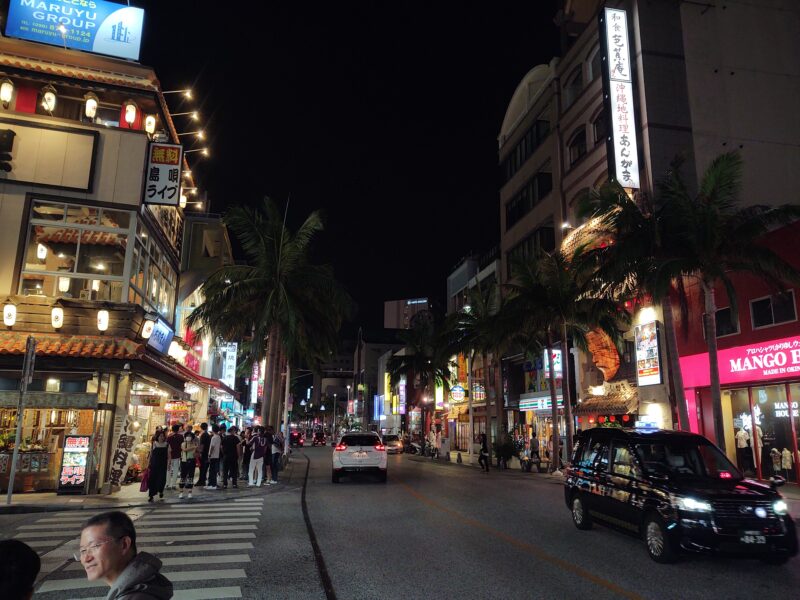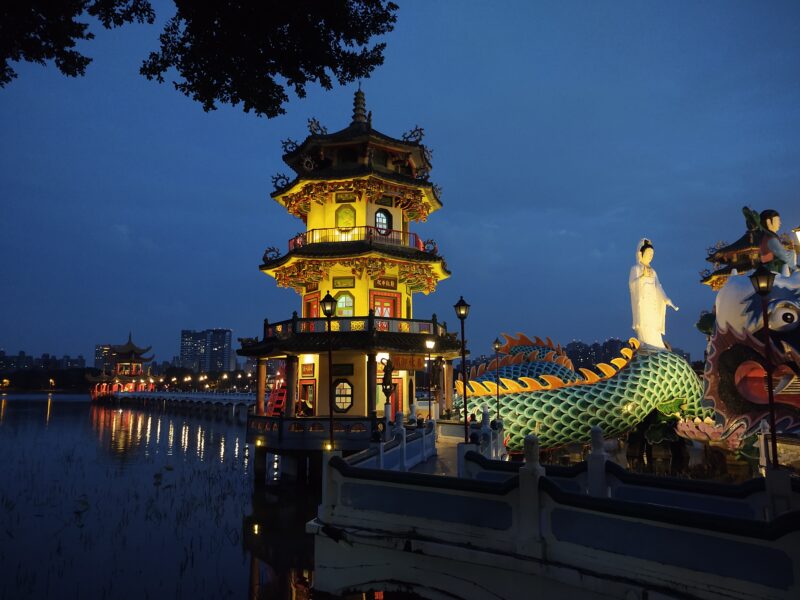Penang, called “The Pearl Of Southeast Asia,” stands out for its traditional, old-fashioned, and laid-back vibe. I arrived on the last flight of the day to Penang Airport half an hour before midnight and got my first taste of Malaysia.
In response to my destination, the man working the taxi counter told me to step this way and ride with this fellow over here. “Welcome to paradise,” he said and smiled as I thanked him and departed.
Malaysia — First Impressions
My driver immediately struck up conversation in perfect English, which almost everyone here speaks thanks to the country’s heritage as a former British colony. We had a very pleasant and lighthearted chat about music, filled with as many laughs as deep comments and insights.
As it turns out, Malaysians love music, both Western and home-grown. He told me how music touched his soul in a special way and made him feel so deeply. He had different genres for different moods, with everything from sad ballads that would make him cry to upbeat, rocking tunes. He loved Iron Maiden and Metallica especially. “Still Lovin’ You,” an emotive rock ballad by Scorpions, played on the radio as we drove. I appreciated his genuine sensitivity.
Nearing my hotel, he pointed just up the road and told me that’s where all the nightlife is, with plenty of live music and bars to enjoy, even after midnight. I was tempted to check it out, but thought I’d better just get to bed and stay well-rested.
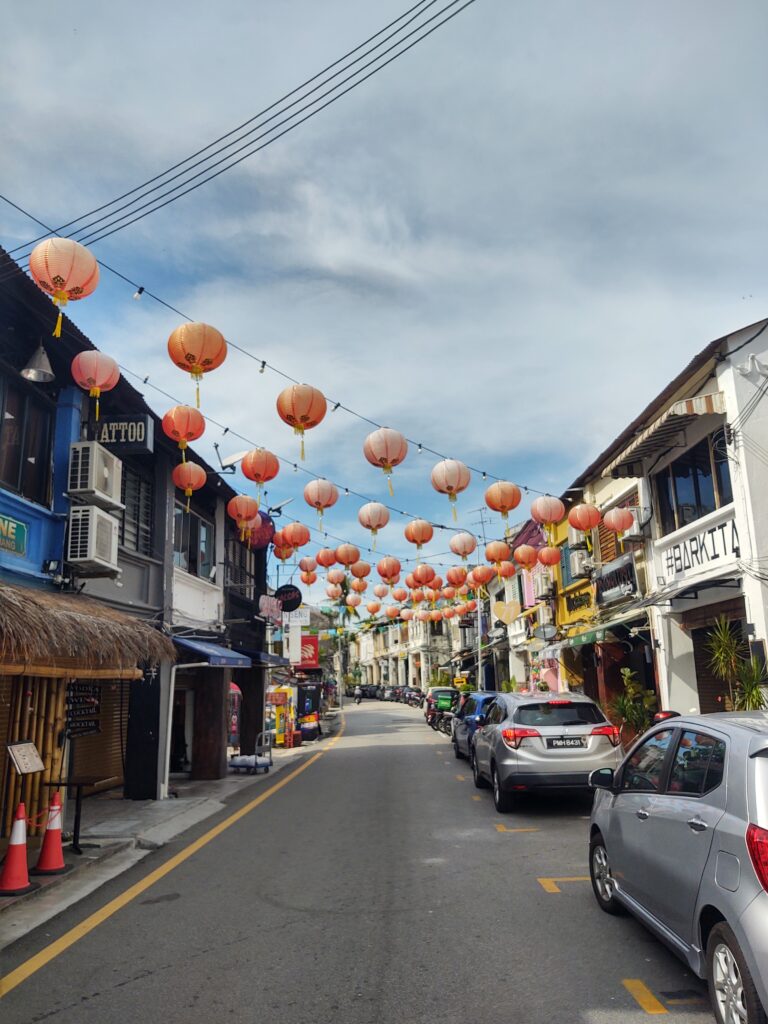
What To Do In Penang — 2-Day Itinerary
“Penang” itself refers to the island, and the main city you’ll be reading about is actually called “George Town” (shoutout to the British again). The two names are essentially interchangeable, especially for travelers.
If you’re planning a visit to Penang, two days is sufficient to see everything. Spend one day in George Town and a second day in the nearby hills around Kek Lok Si Temple. If you have an extra day, check out the beaches at Batu Ferringhi on the north side of the island.
Budget-wise, Penang is not a very expensive city. You can expect to spend between $25-$50 USD per day in Penang, including accommodations.
Komtar Penang
I began my main day of Penang sightseeing by going to the observatory at the top of Komtar Penang, which my taxi driver had pointed out the previous night.
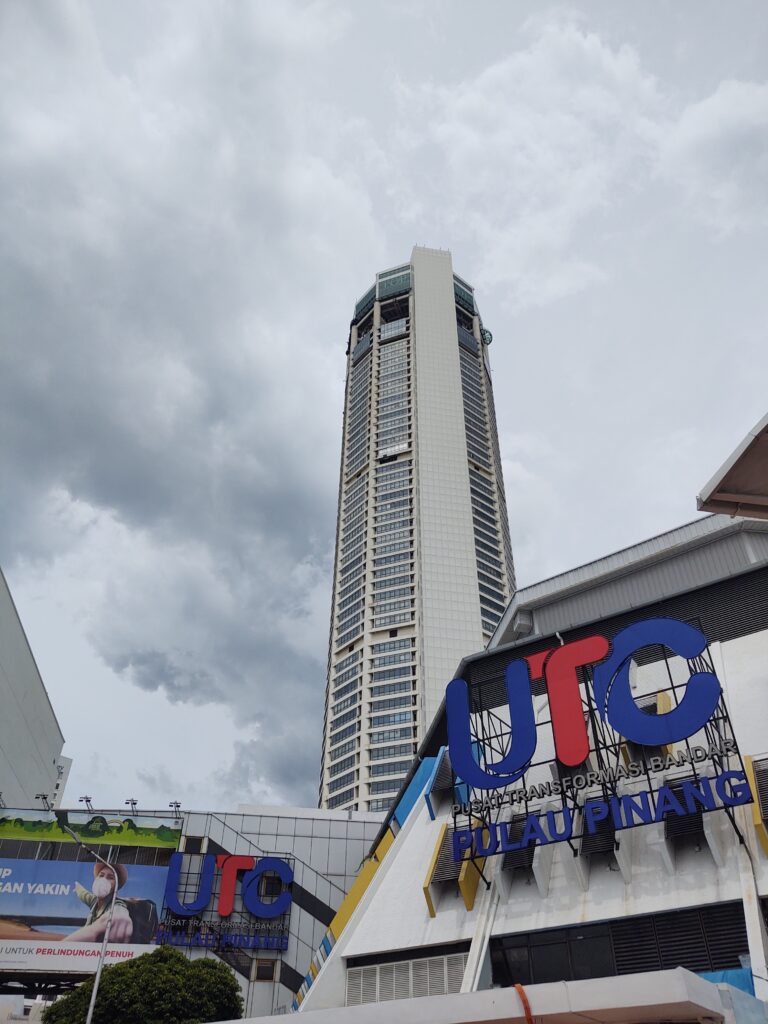
Komtar is the tallest building in Penang and formerly the tallest in all of Asia when it opened in 1988. The views from the top were fantastic. I got a great view of Penang island and its hills, George Town, the mainland, and the Penang Strait located between them all.
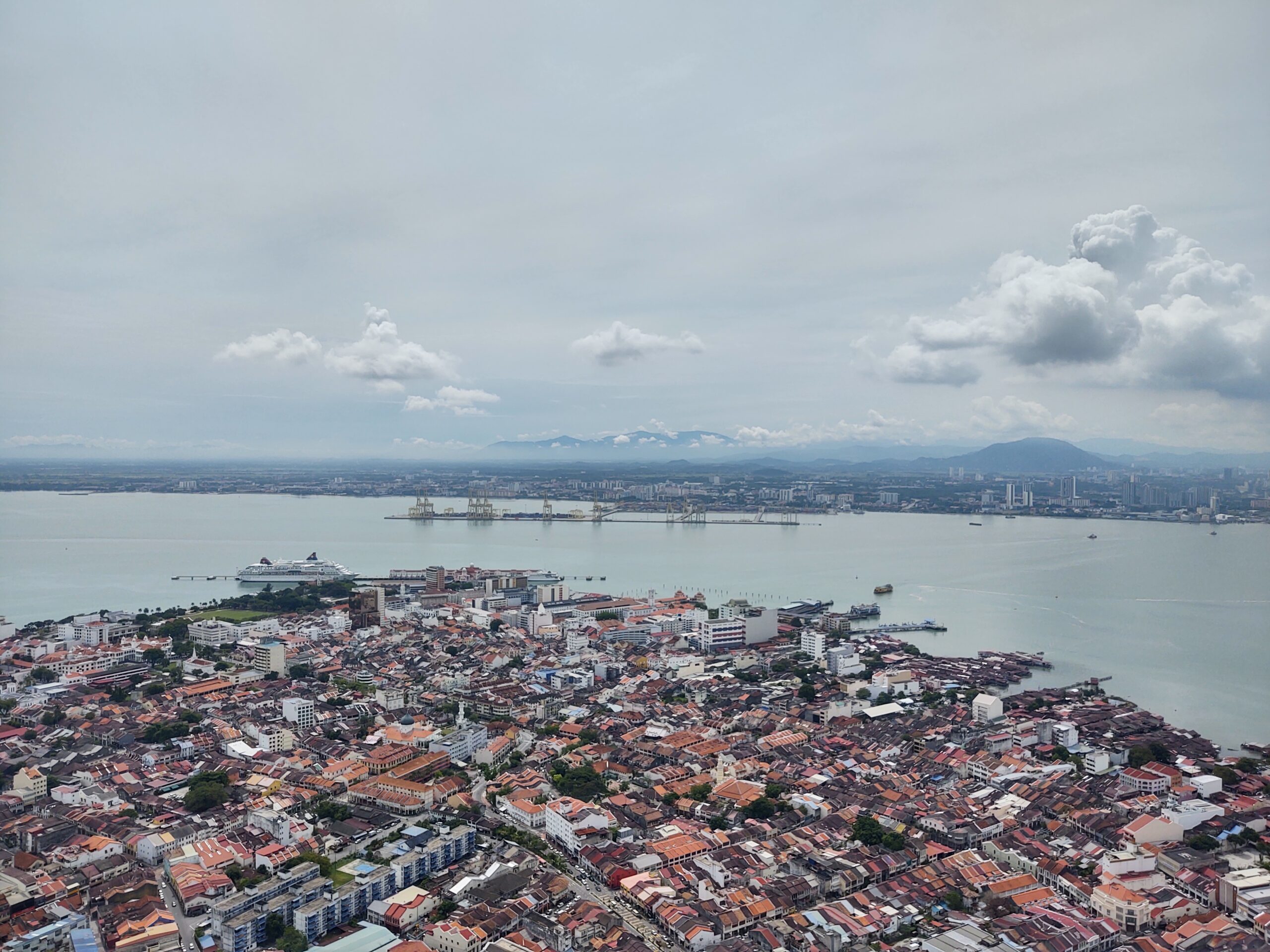
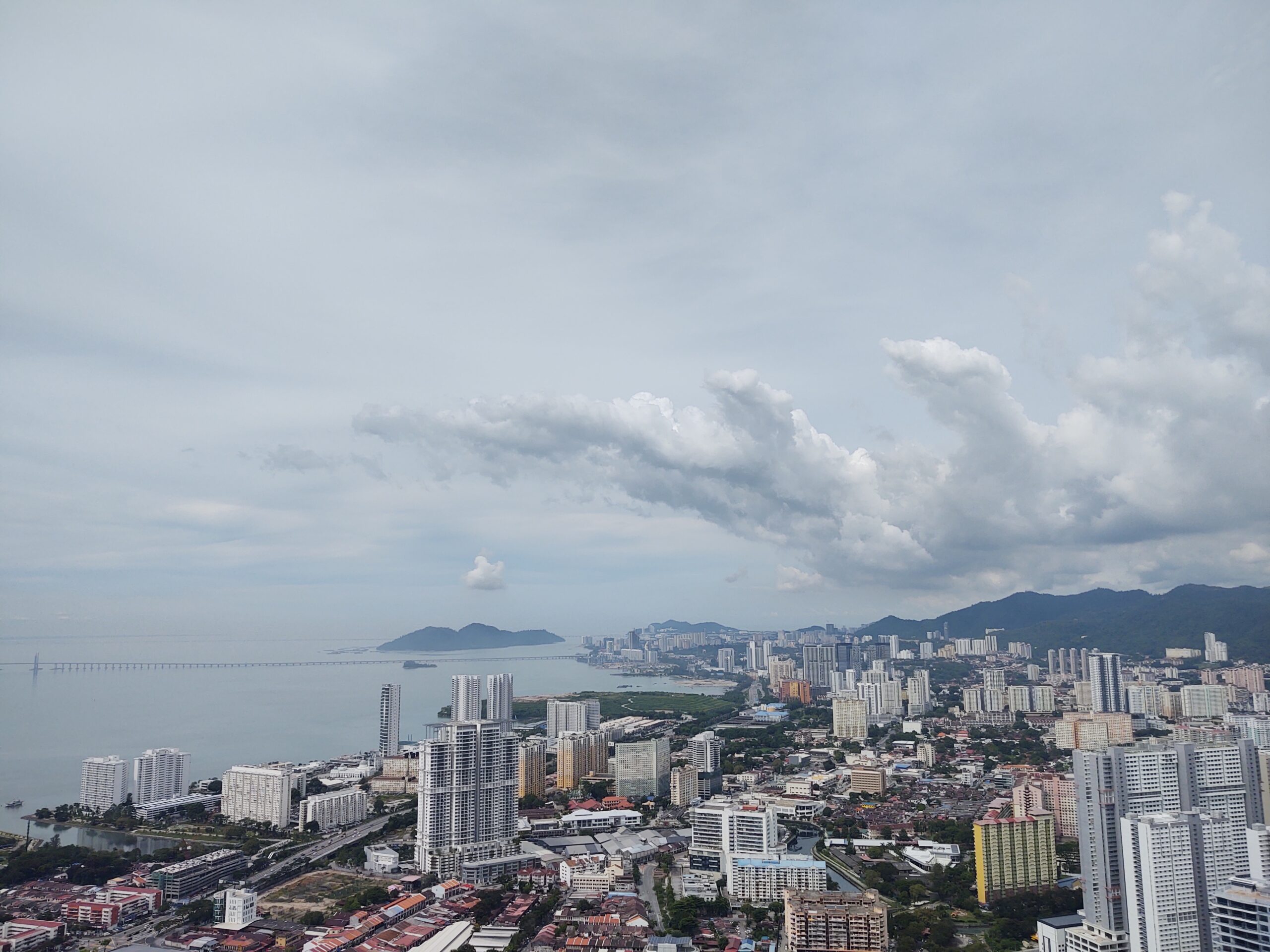
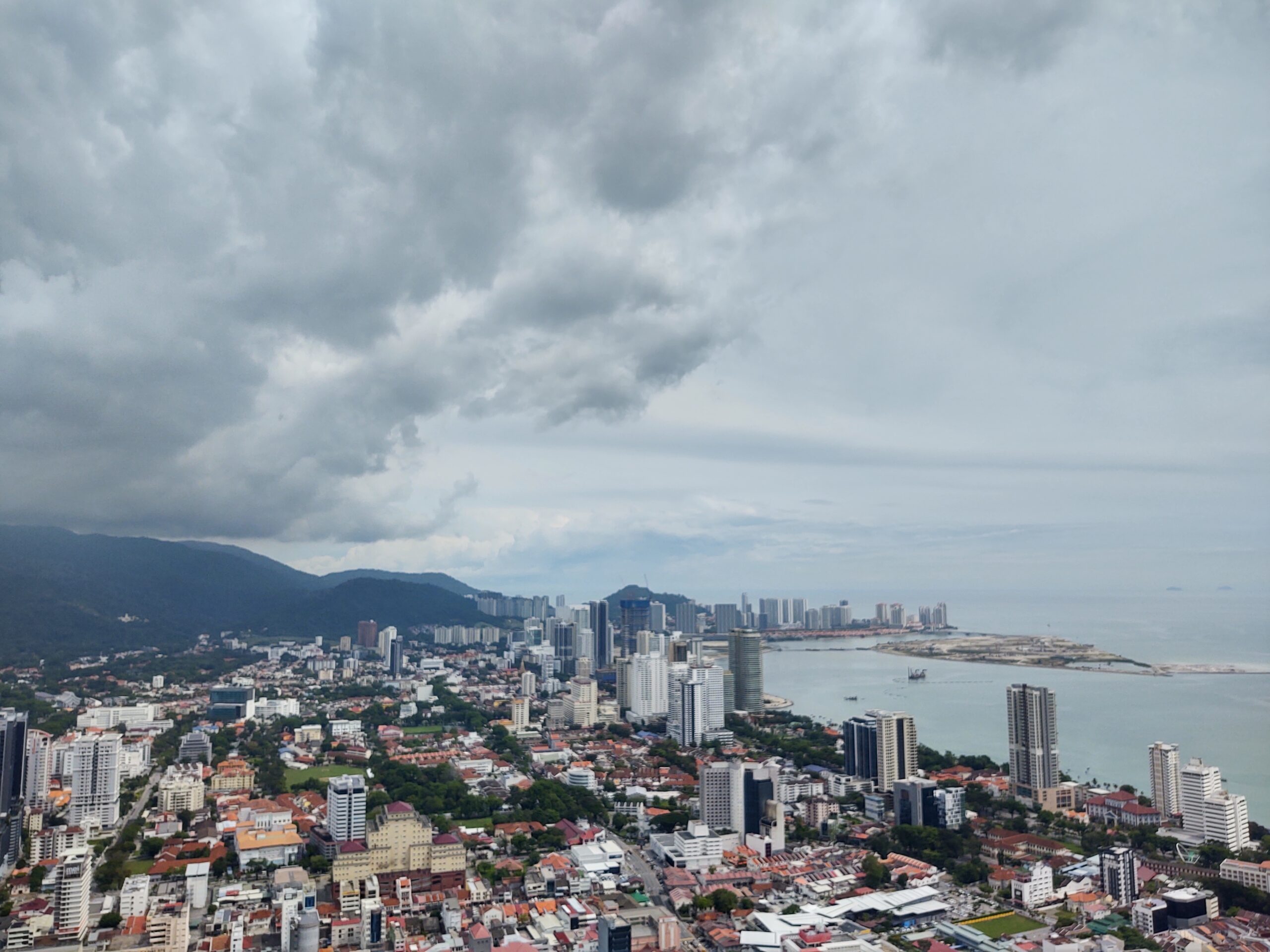
The observatory is also home to an adrenaline park as well as the world’s first glass skywalk. The transparent-bottom, U-shaped walkway protruding from the 68th floor was in equally sickening parts beautiful and terrifying.
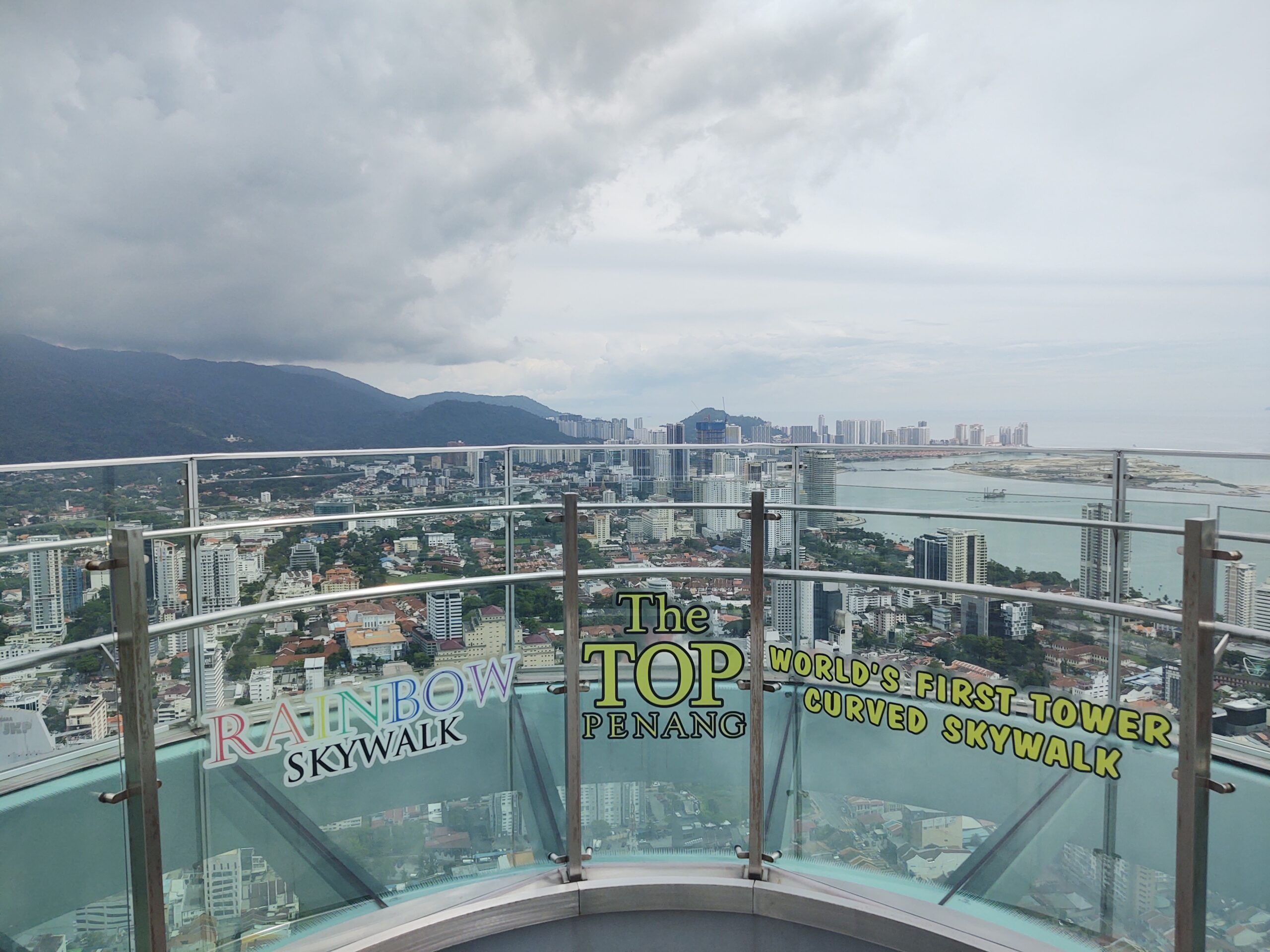
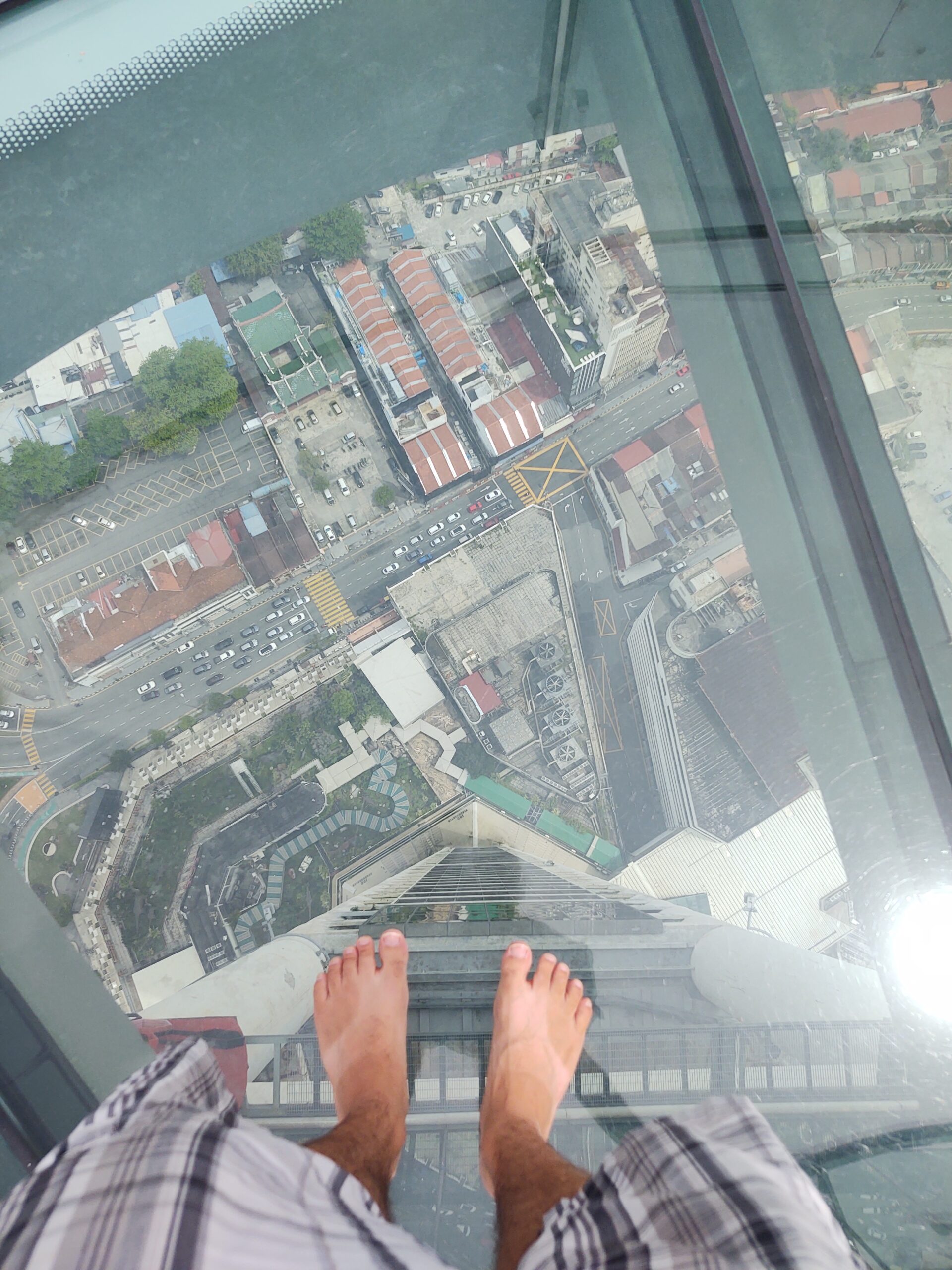
Walking Tour Of Penang
After returning to the ground, I began touring the city my preferred way — by foot. I walked a great distance over the course of the day, first passing through fishy-smelling local markets as I headed towards the more-visited downtown area.
The first thing I began to notice were the sidewalks. I know that probably sounds very exciting, but hear me out. Penang’s walkways are almost entirely carved out of its streetside buildings in arched pedestrian cloisters. I remember the exact same in Bologna, Italy, which it strangely echoes.
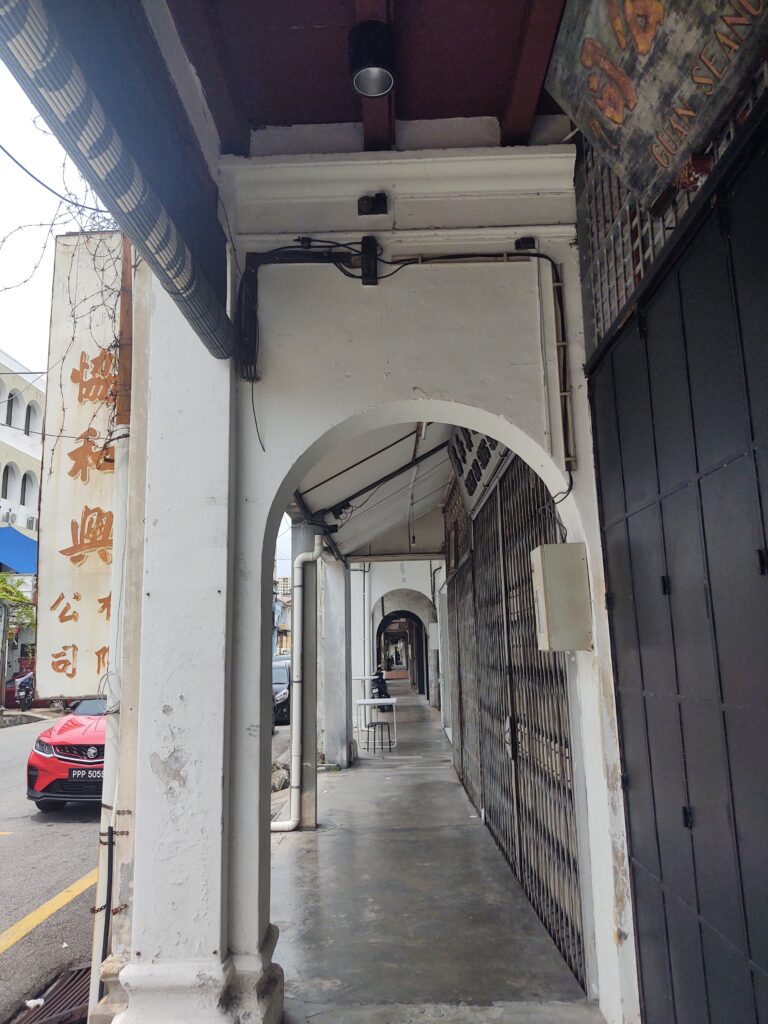
In fact, the city has an incredibly European feel to it. Among the arches and walkways, however, one finds uniquely Asian, Malay, and Penangite flairs. All the text is in Bahasa Malay or occasionally Chinese, the tiny shops sell knock-off goods at tiny prices, restaurants sling noodles, strong coffee, and fish, and here and there you pass an ornate mosque rather than a church.
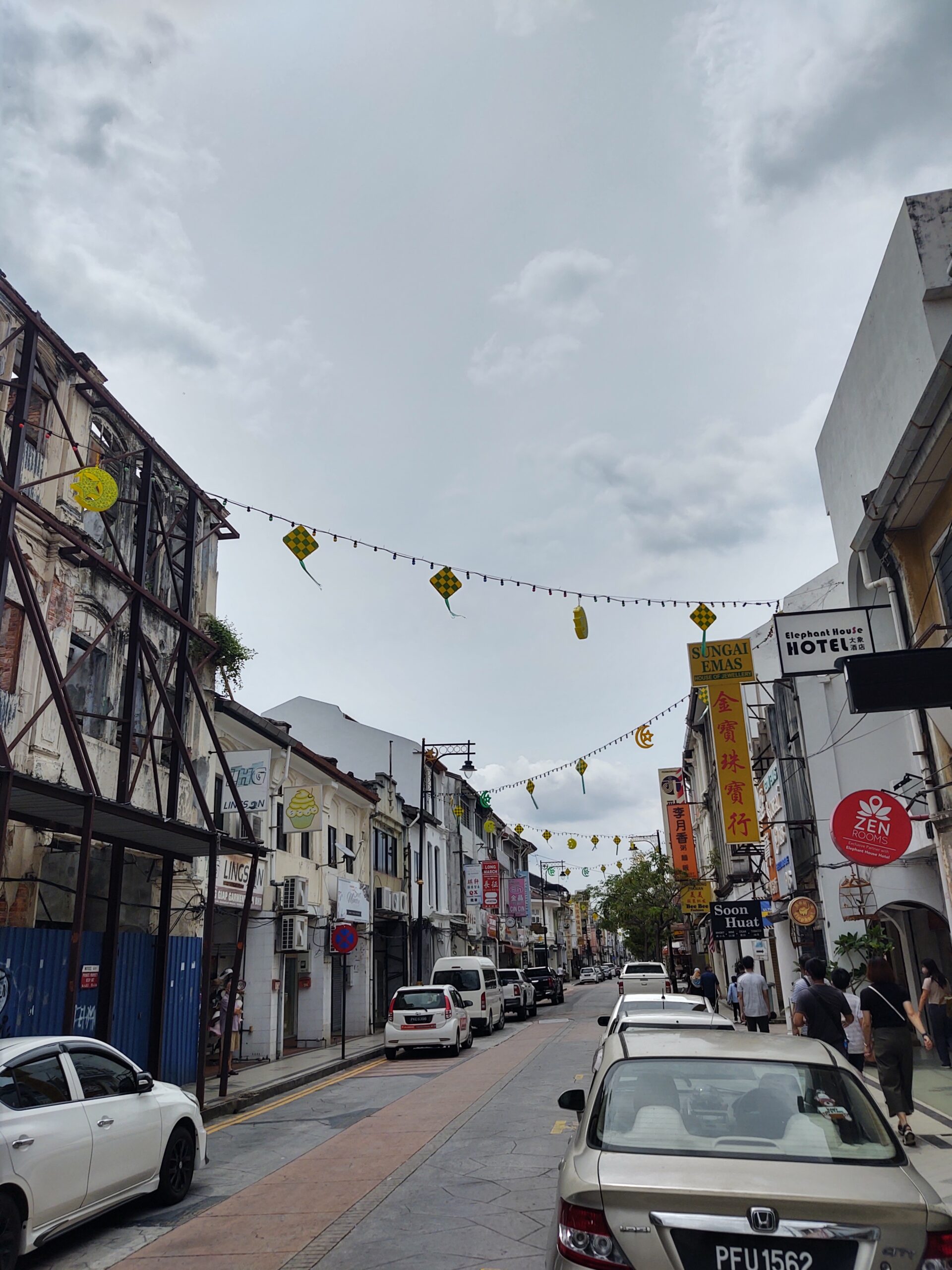
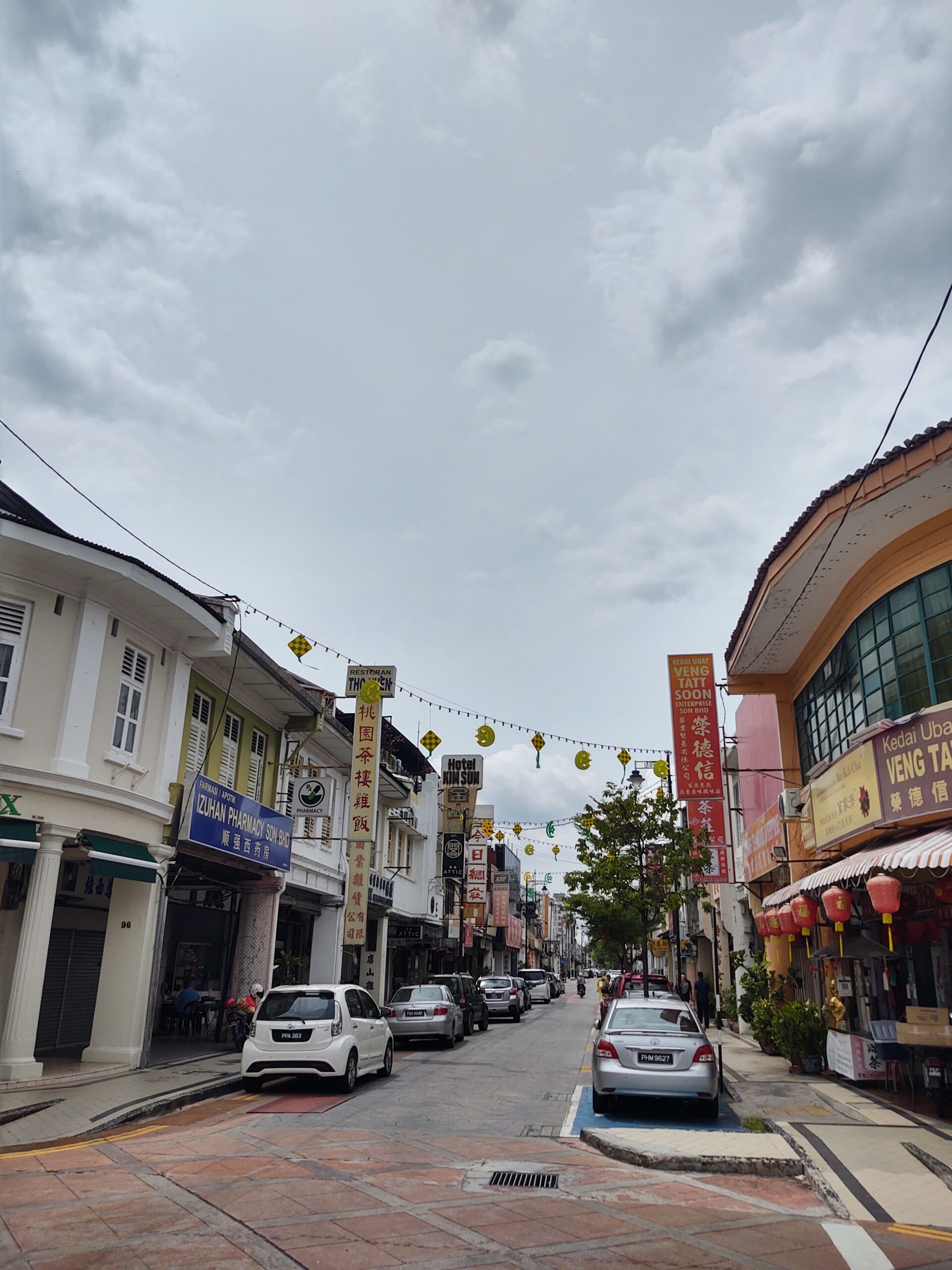
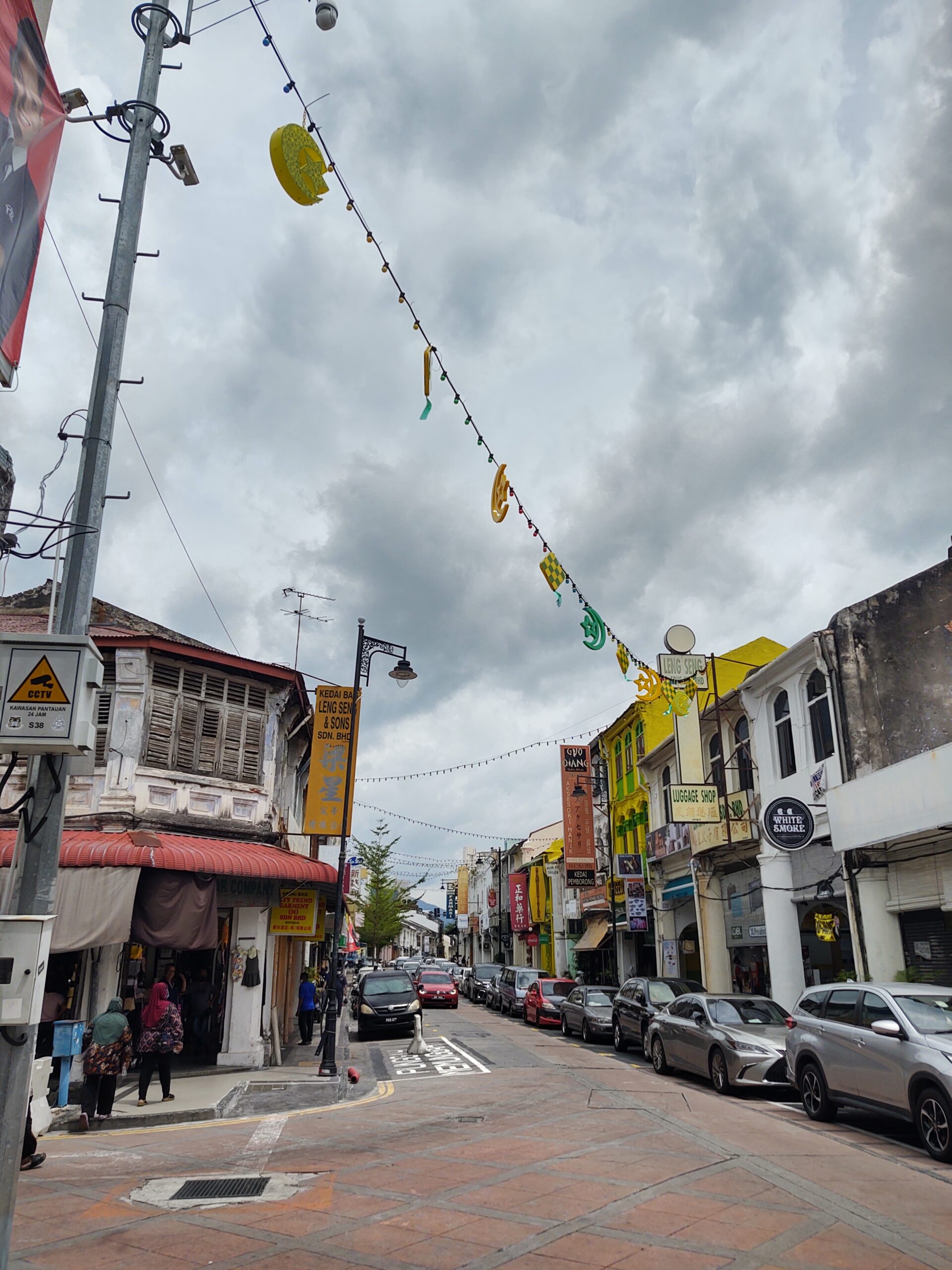
As I walk, Penang charms me more and more. In these small, one-way streets, it is quiet and not very crowded. The buildings are colorful and stately, albeit weathered, looking as though they’ve been pleasantly lived in for some time. Approaching the core of downtown, it gets a bit busier. I stop to admire the façade of a beautiful Chinese temple, then begin down Armenian Street, which houses more restaurants, markets, and dessert shops.
Armenian Street & Penang Street Art
I start getting my first glimpses of Penang’s famous, unique street art. A bicycle sits against a wall that holds a fresco of a boy riding it. A swing leans against another, where painted children sit and play. The area is filled with countless pieces like these, halfway real, living, and 3D, and halfway still, painted, and silent. It is as though the town is full of happy ghosts.
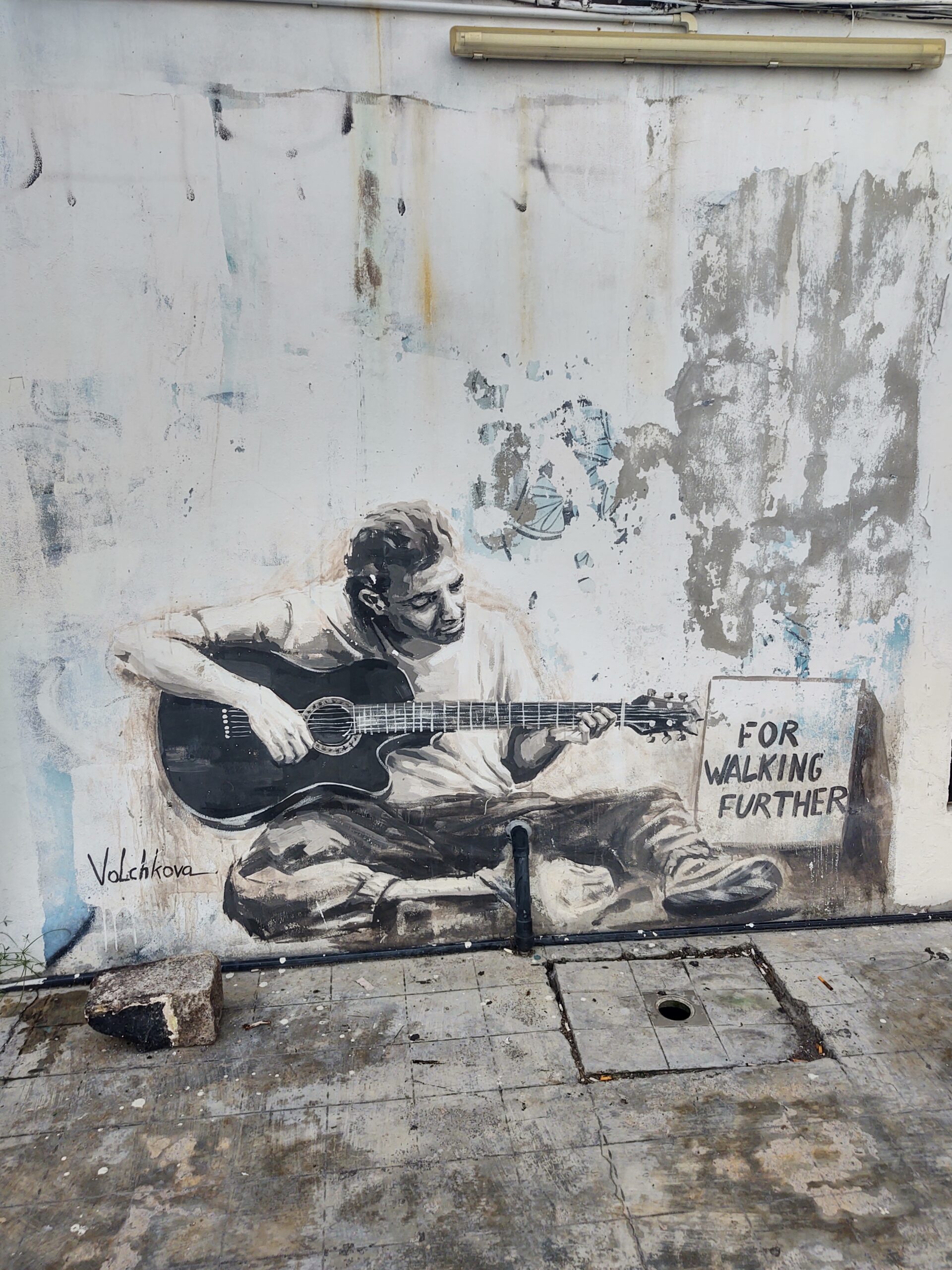
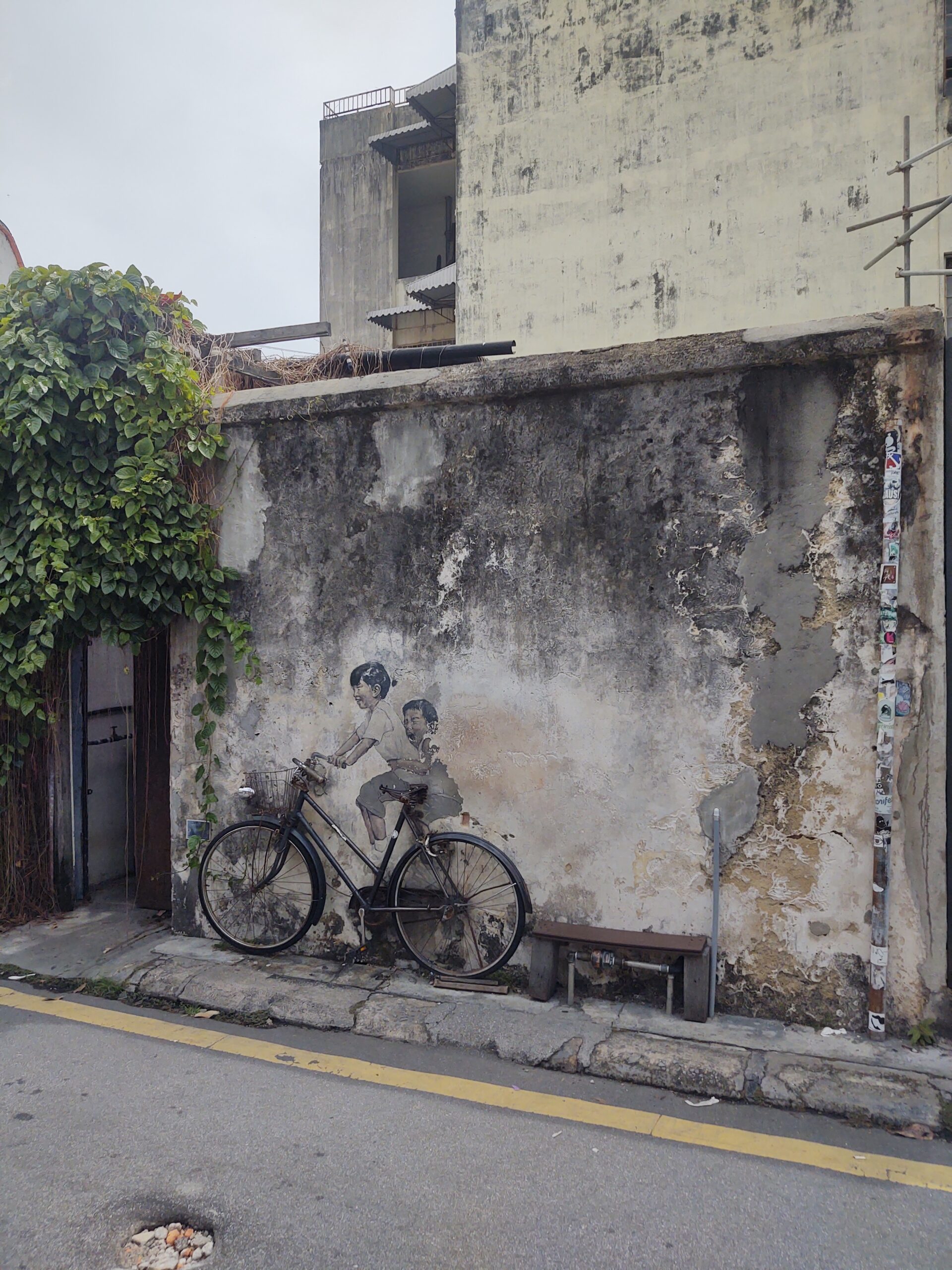
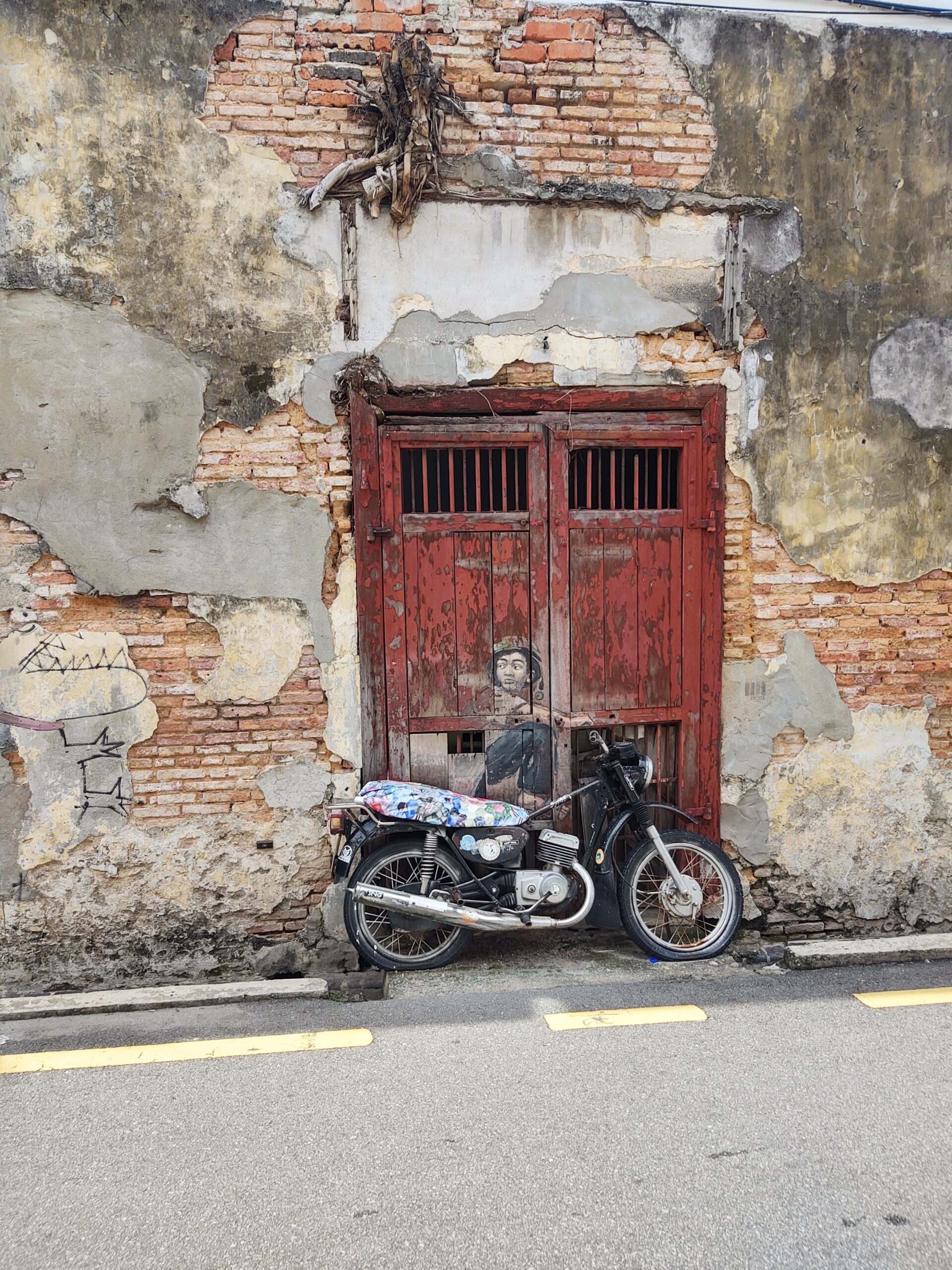
I stop at a food court, which is similarly styled to those found in Singapore. I decide to order whatever looks most interesting and unique, chowing into some exquisite local spicy sausages and some savory fried noodles. Malay cuisine is tasty, and Penang is a foodie city in the same vein as Chiang Mai. It’s a bit saucier and heavier than Thai food, with a lot more stews and soups on the menu, and perhaps not as varied and multicultural as Singaporean food.
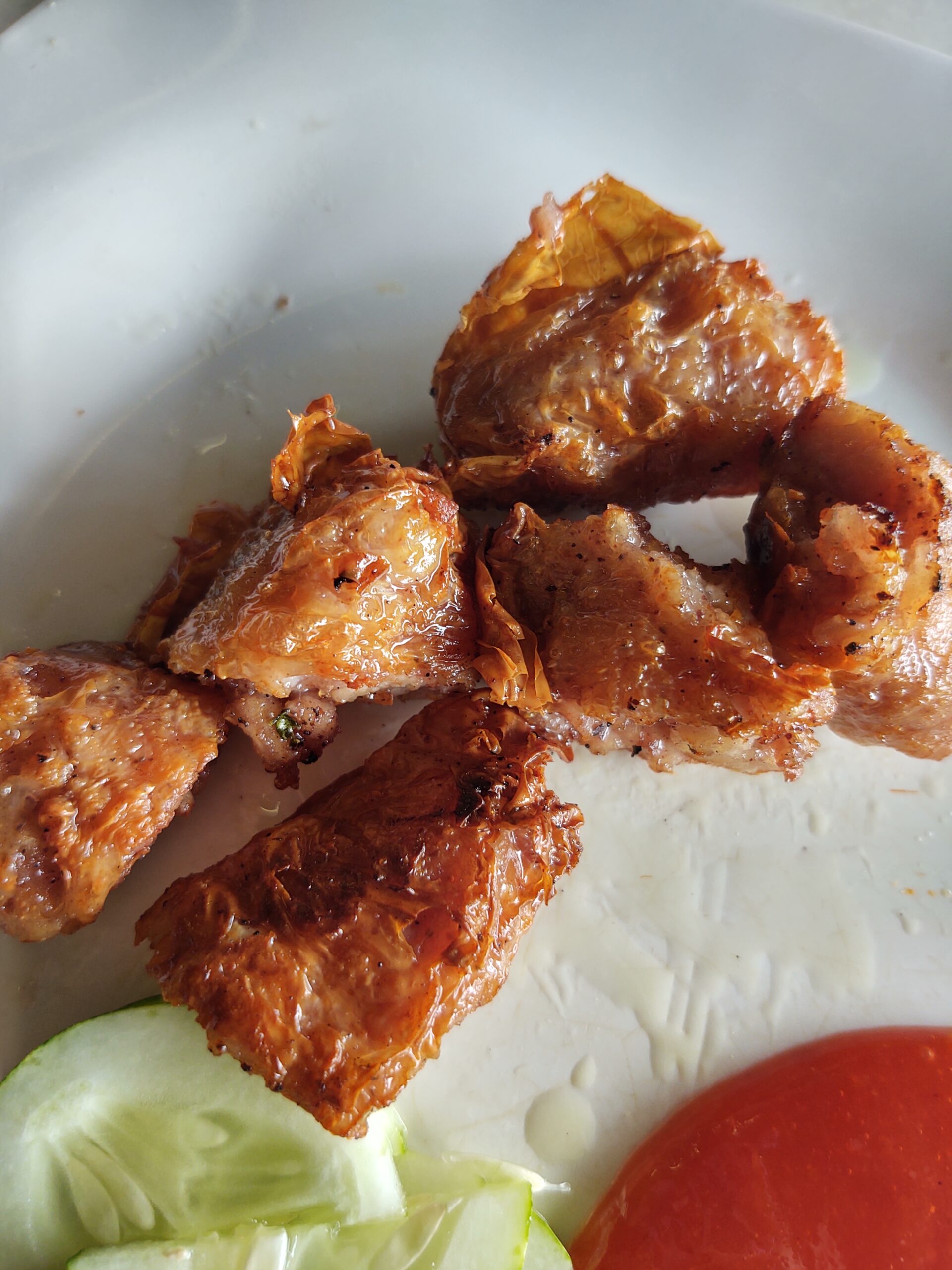
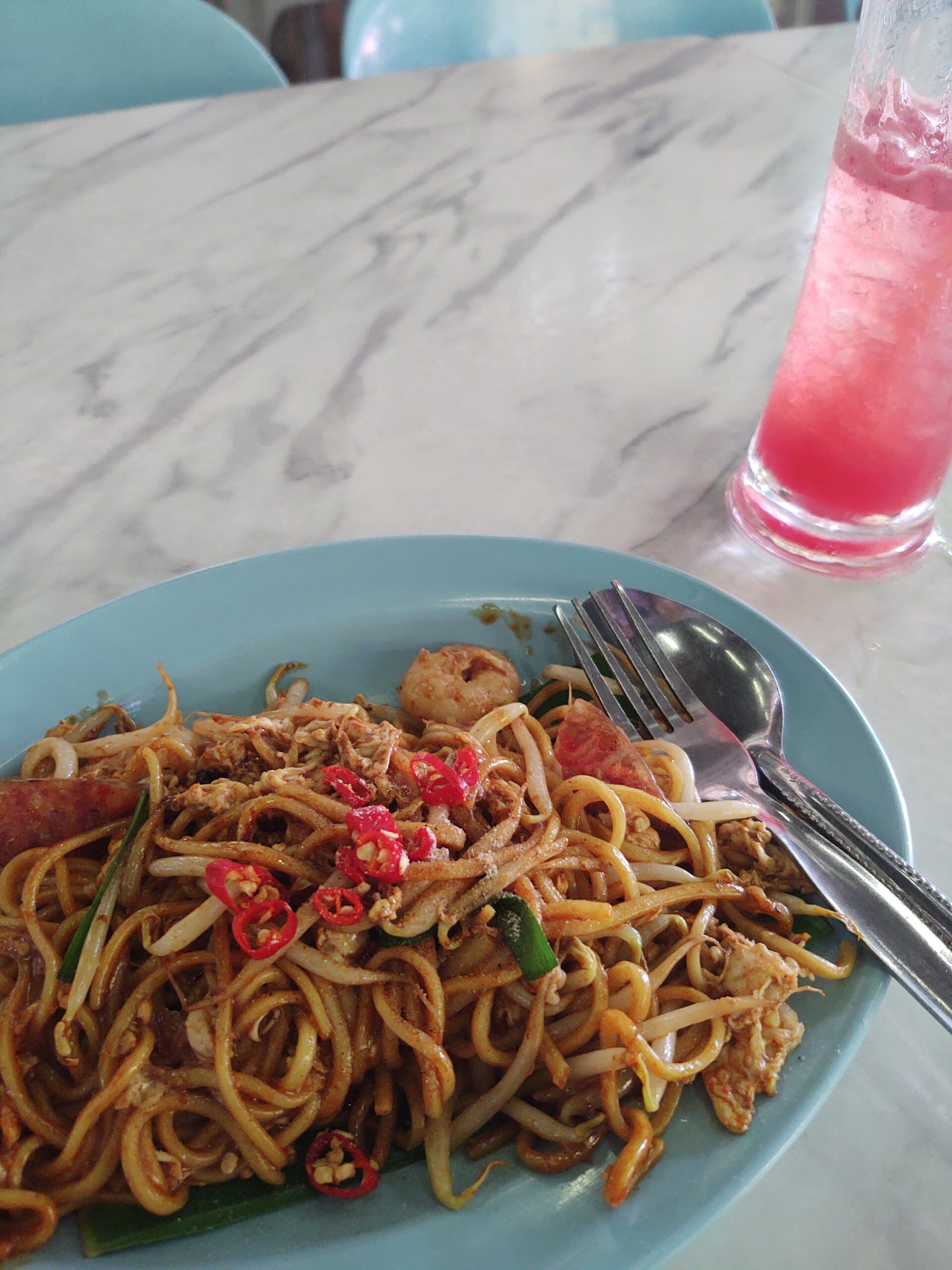
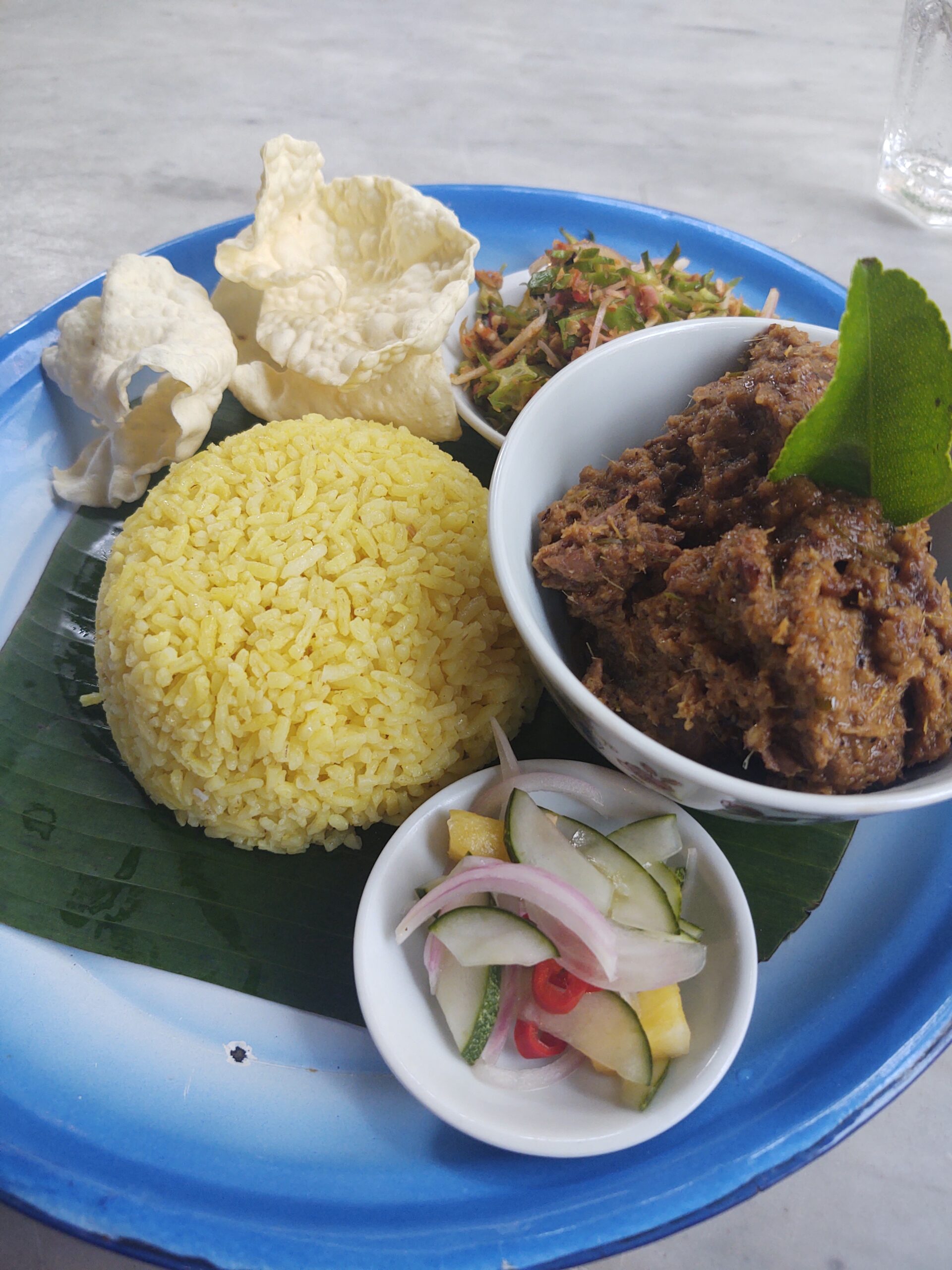
I enjoyed Malay food, but it’s got some seriously tough competition from its neighbors.
Chew Jetty
Outside the food court, I strolled along Chew Jetty, a wooden pier that juts out into the Penang Strait. Originally, it was built and inhabited by the Chew family, a local Chinese clan, and it holds Chinese temples at both the entrance and the extremity. Today, shops and snack bars line the creaky, narrow walkway.
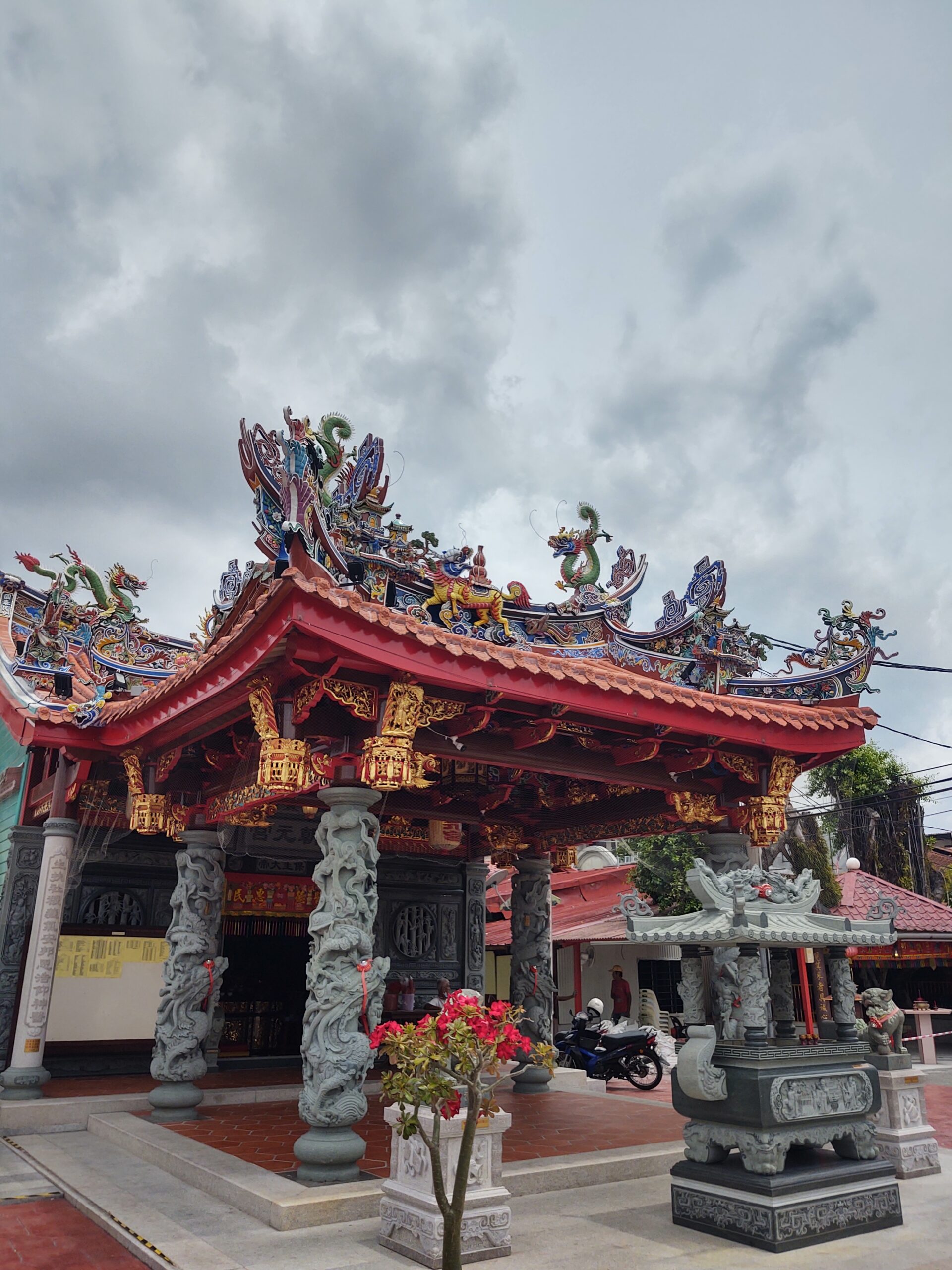
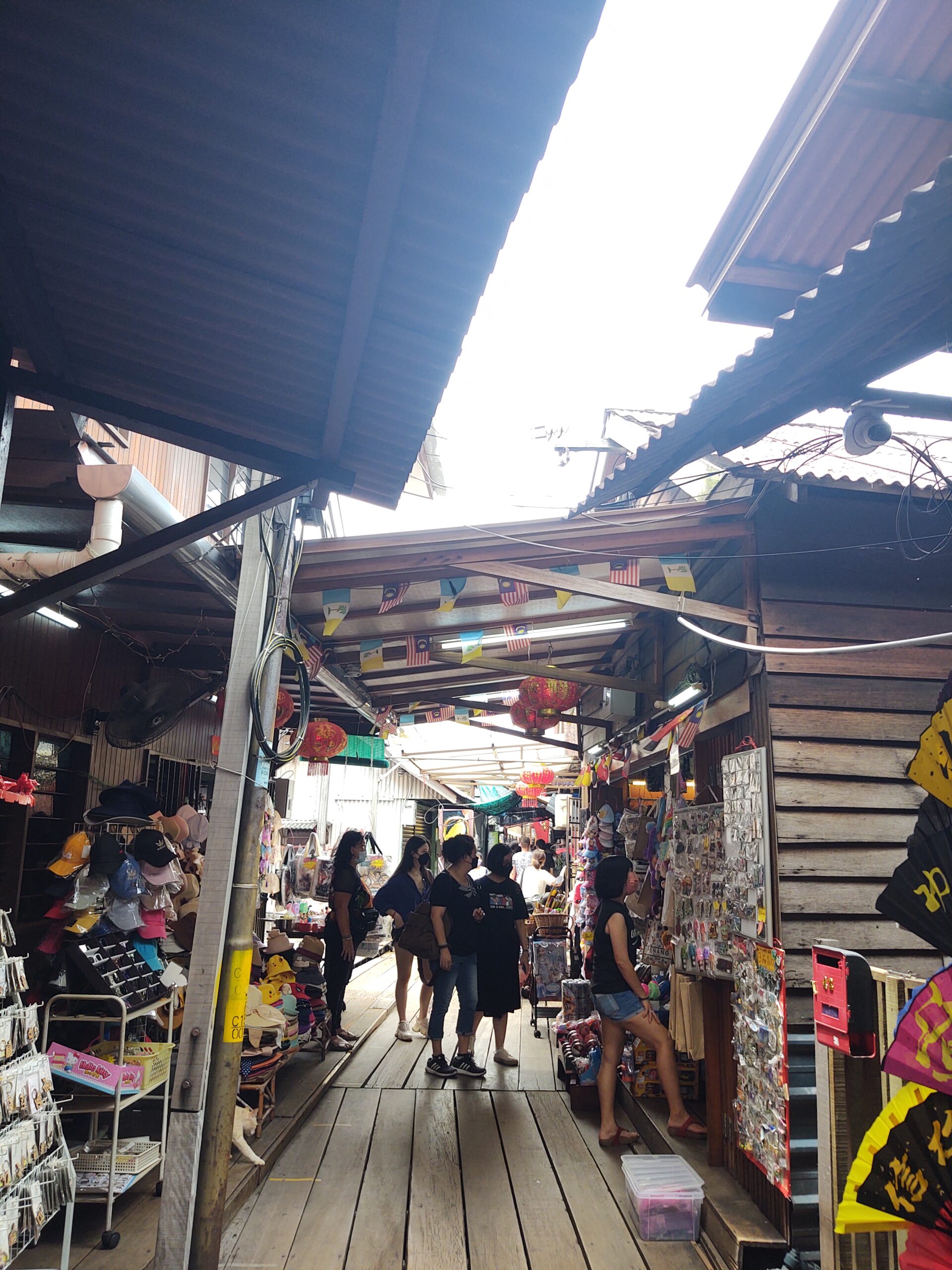
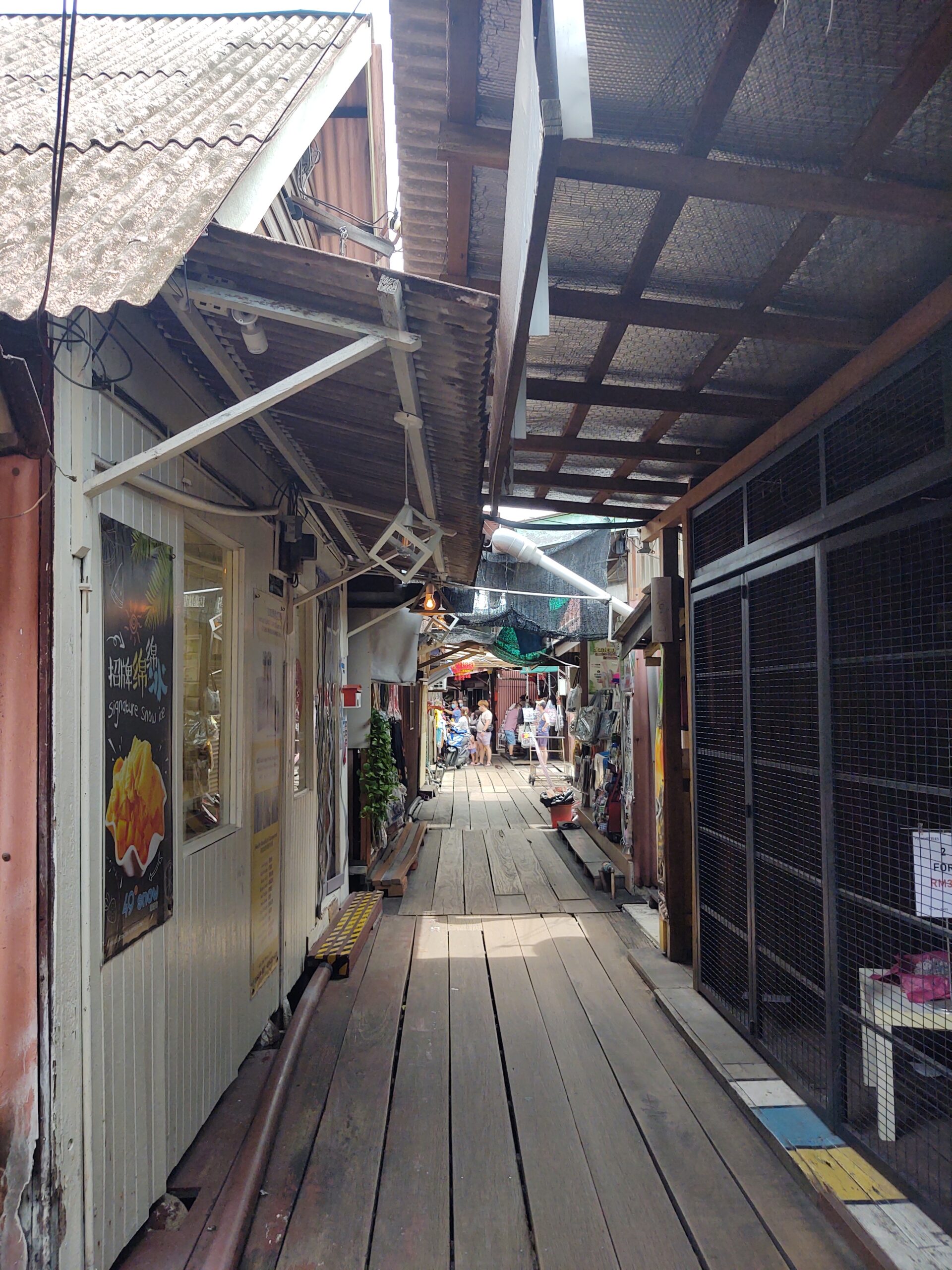
As a reminder that we’re still in Southeast Asia, yes, people ride mopeds up and down this crowded single-file alley too. I grab an ice dessert, referred to as a “snow,” which is wonderfully cooling against the high heat and impenetrable humidity.
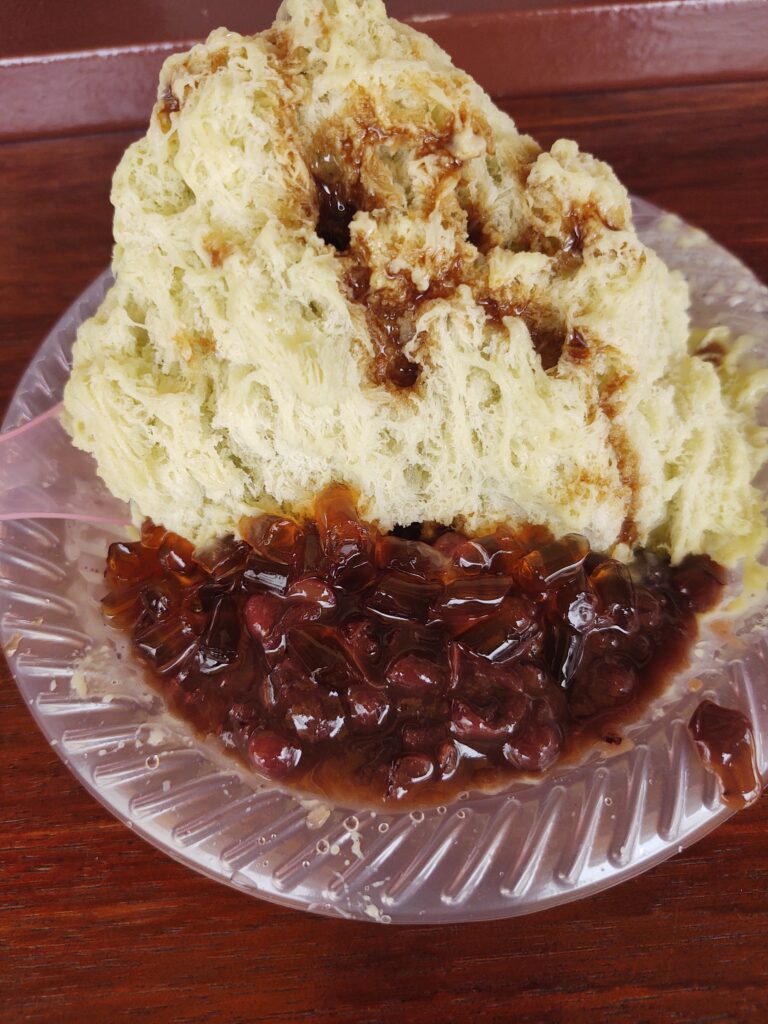
Penang’s Little India
I stroll a little further and immediately find myself smack in the middle of Little India. In Penang, it’s actually not so little; it seems to make up the majority of downtown George Town, right in its heart. Bollywood music plays loudly and the streets become especially crowded in a huge traffic jam of both people and cars — caused by a guy who stopped his pickup in the middle of the road to get some samosas.
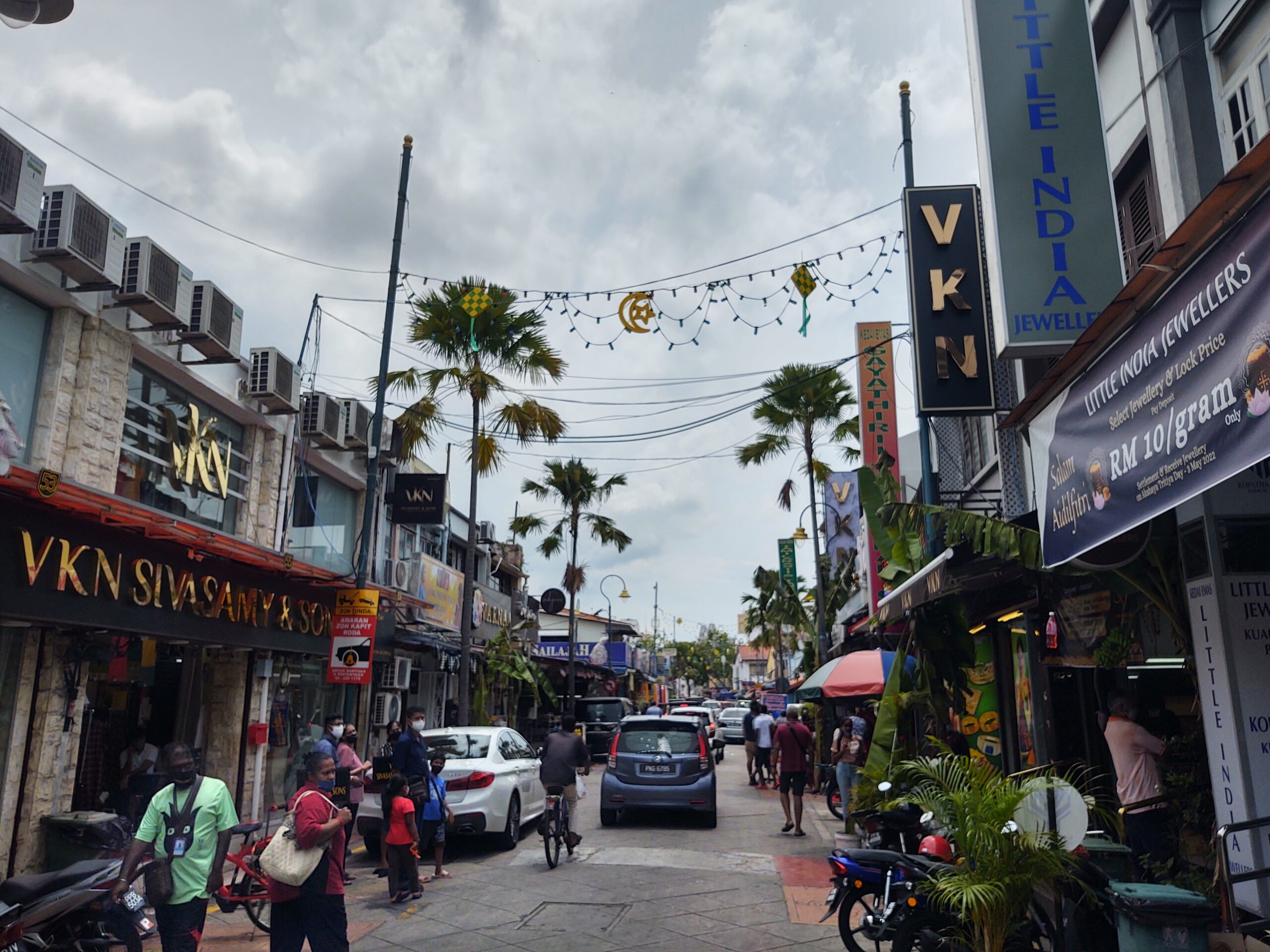
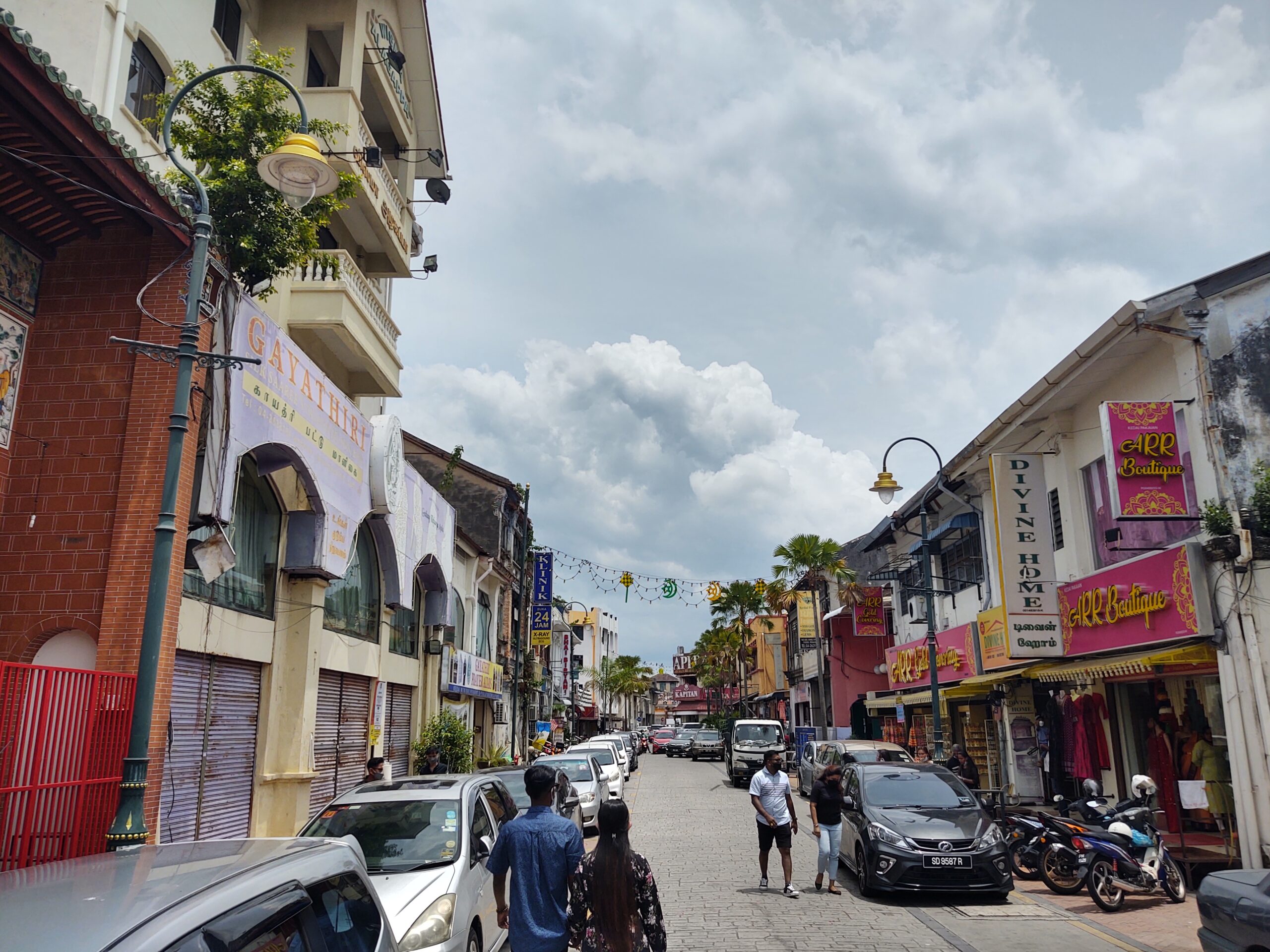
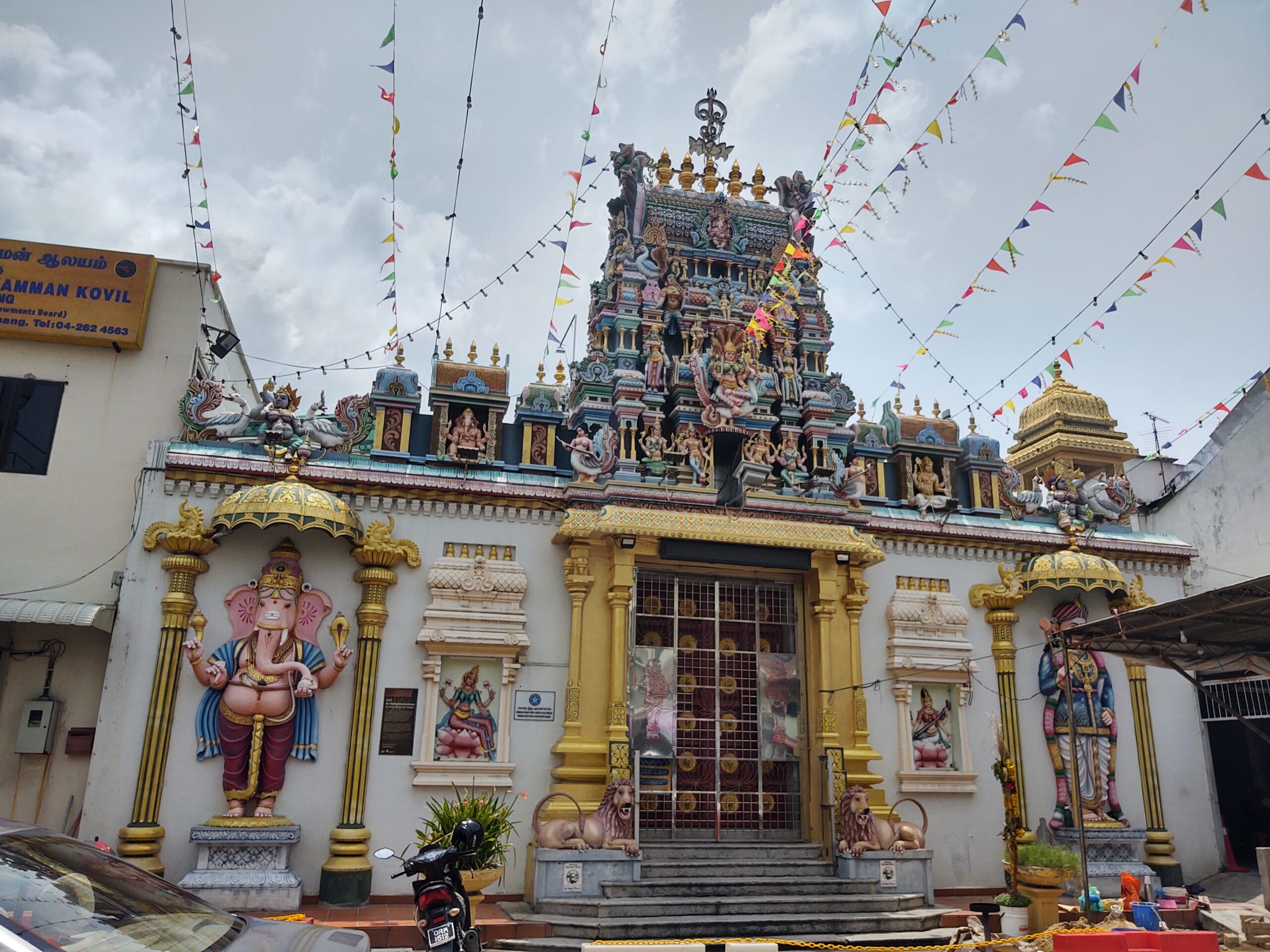
Streetside vendors sell snacks, curry puffs (which are kind of like the Malay version of samosas, but in the shape of empanadas), and exotic-looking spices. Biryani is literally sold by the bucket. A $10 bucket could feed a family of five, and you can get feast deals on up to three or four buckets. I debate getting one for myself, just for the humor of it. Eventually, I decide against it.
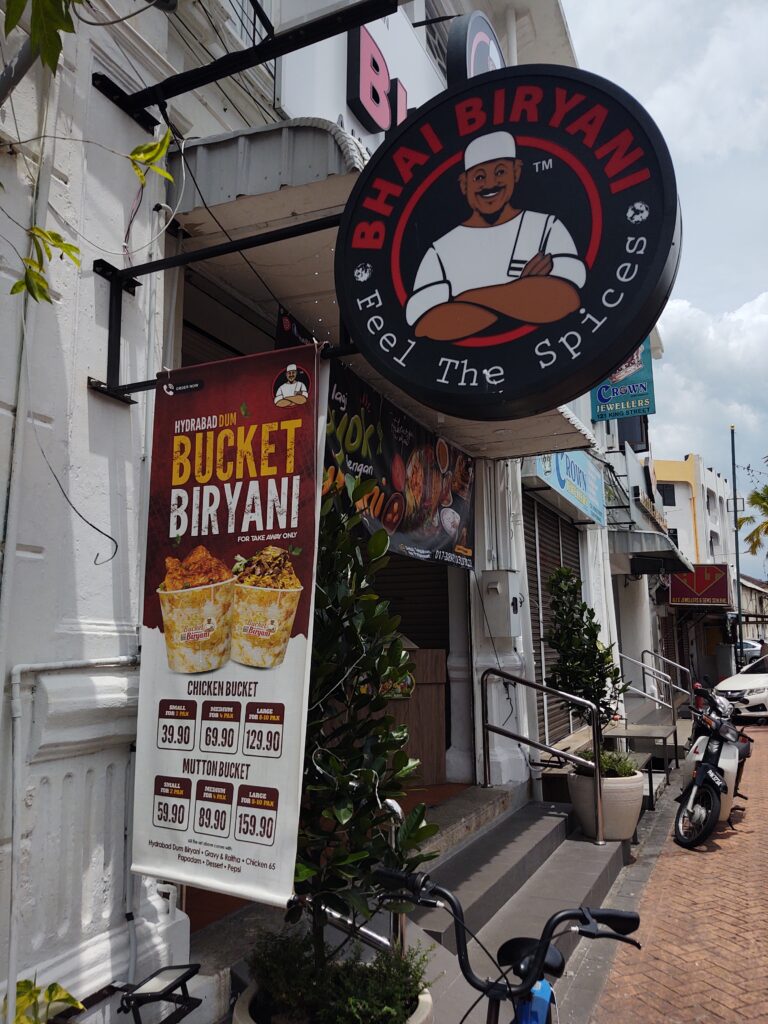
Temples In Penang
Walking a bit more, I pop into some Chinese temples which I discover are everywhere, with one on every block. Each is carefully decorated with ornaments, lanterns, and statues paying respect to a long line of wise elders. Simply stepping in the door is an immediate change in atmosphere — a grounding in complete silence just inches from the busy streets, with quiet, delicately tended atria tucked in the back.
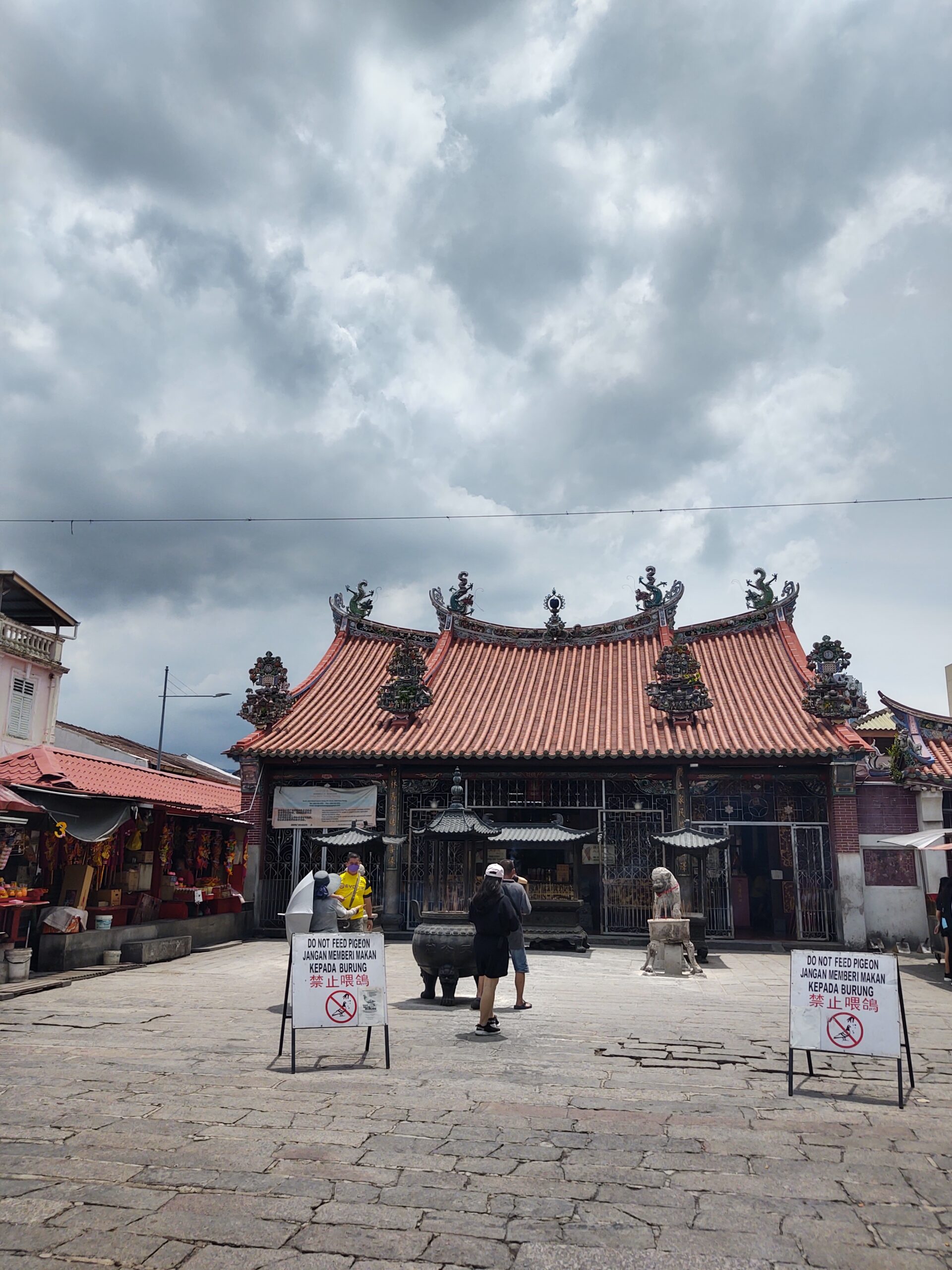
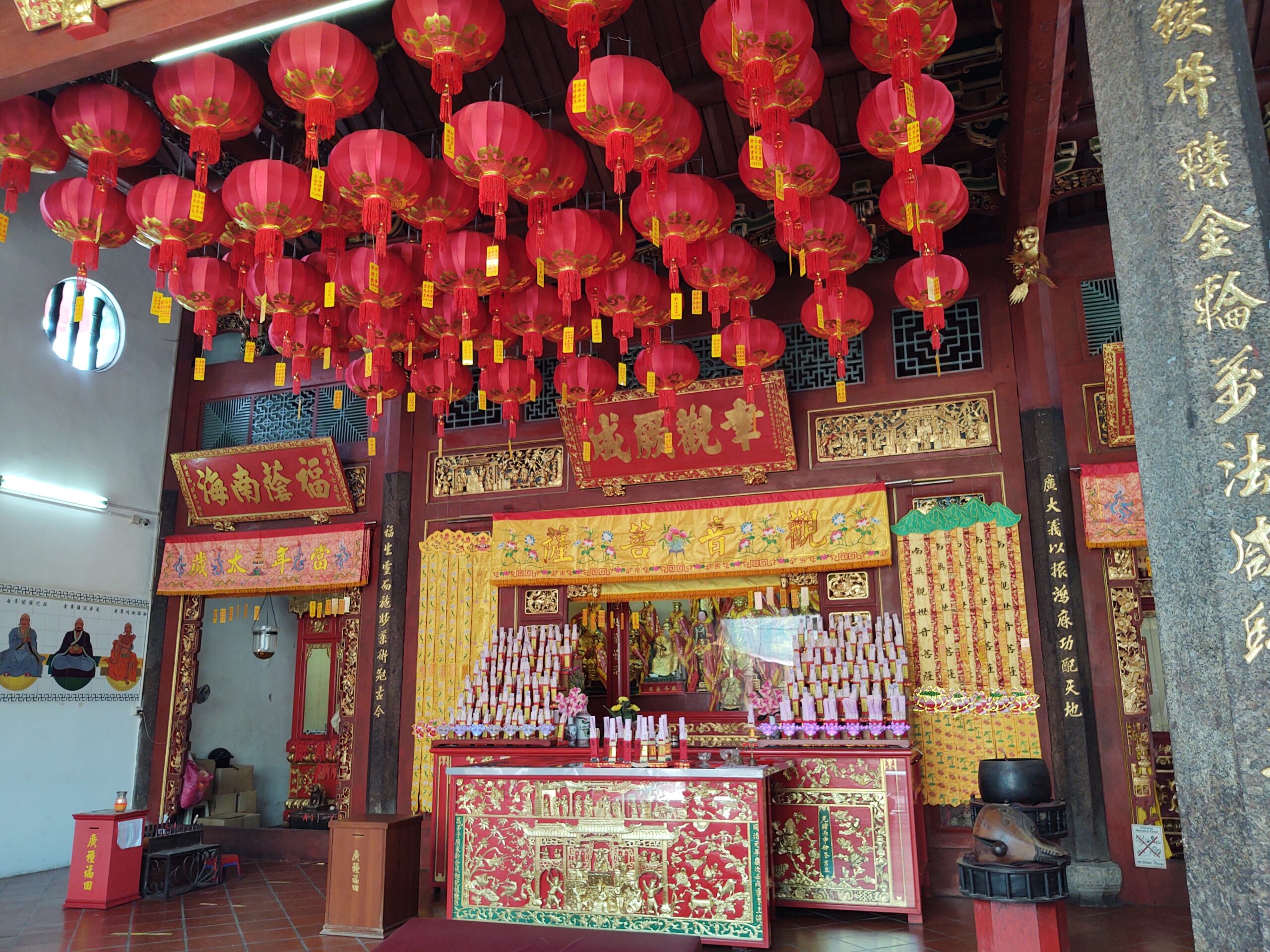
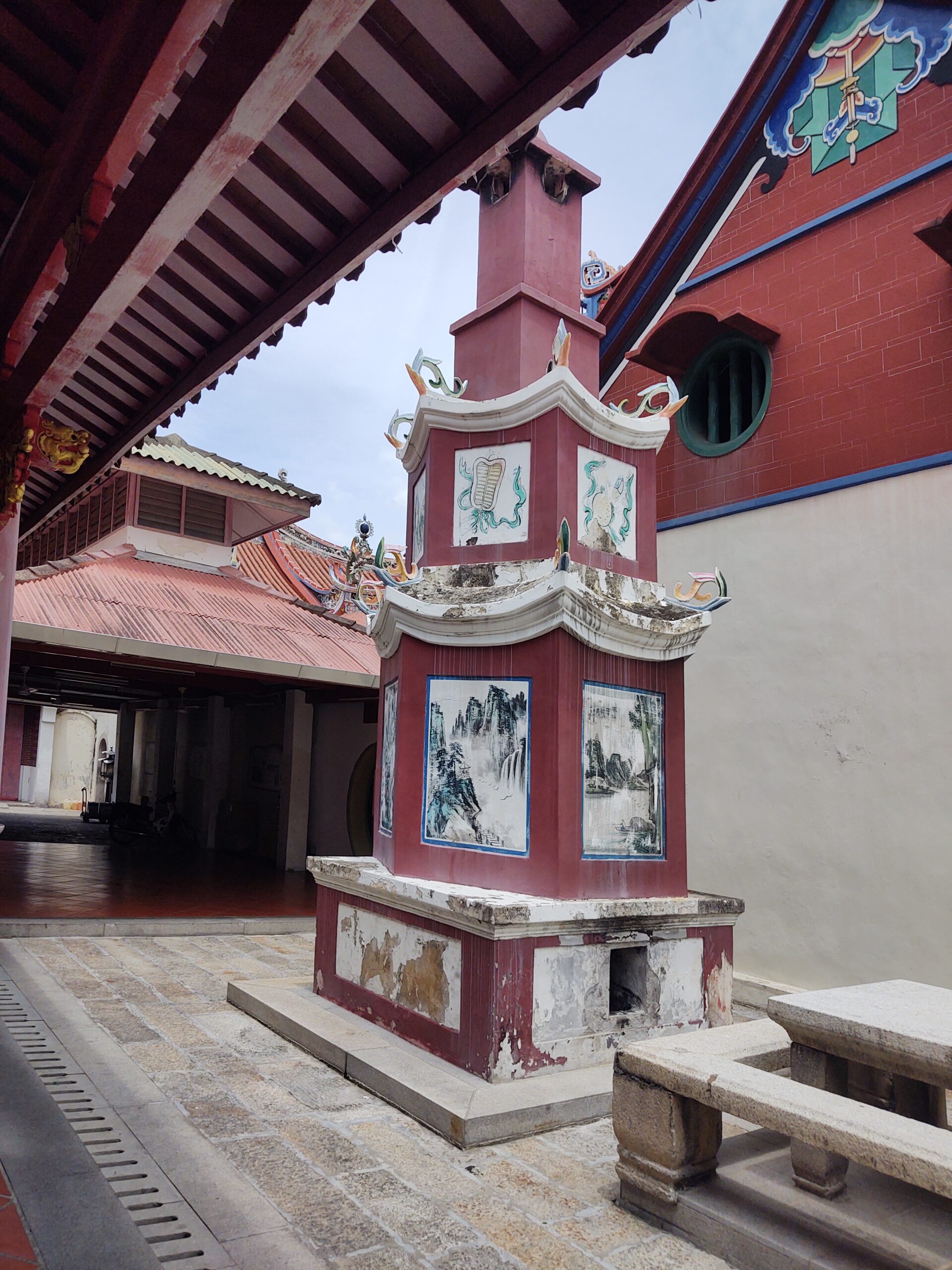
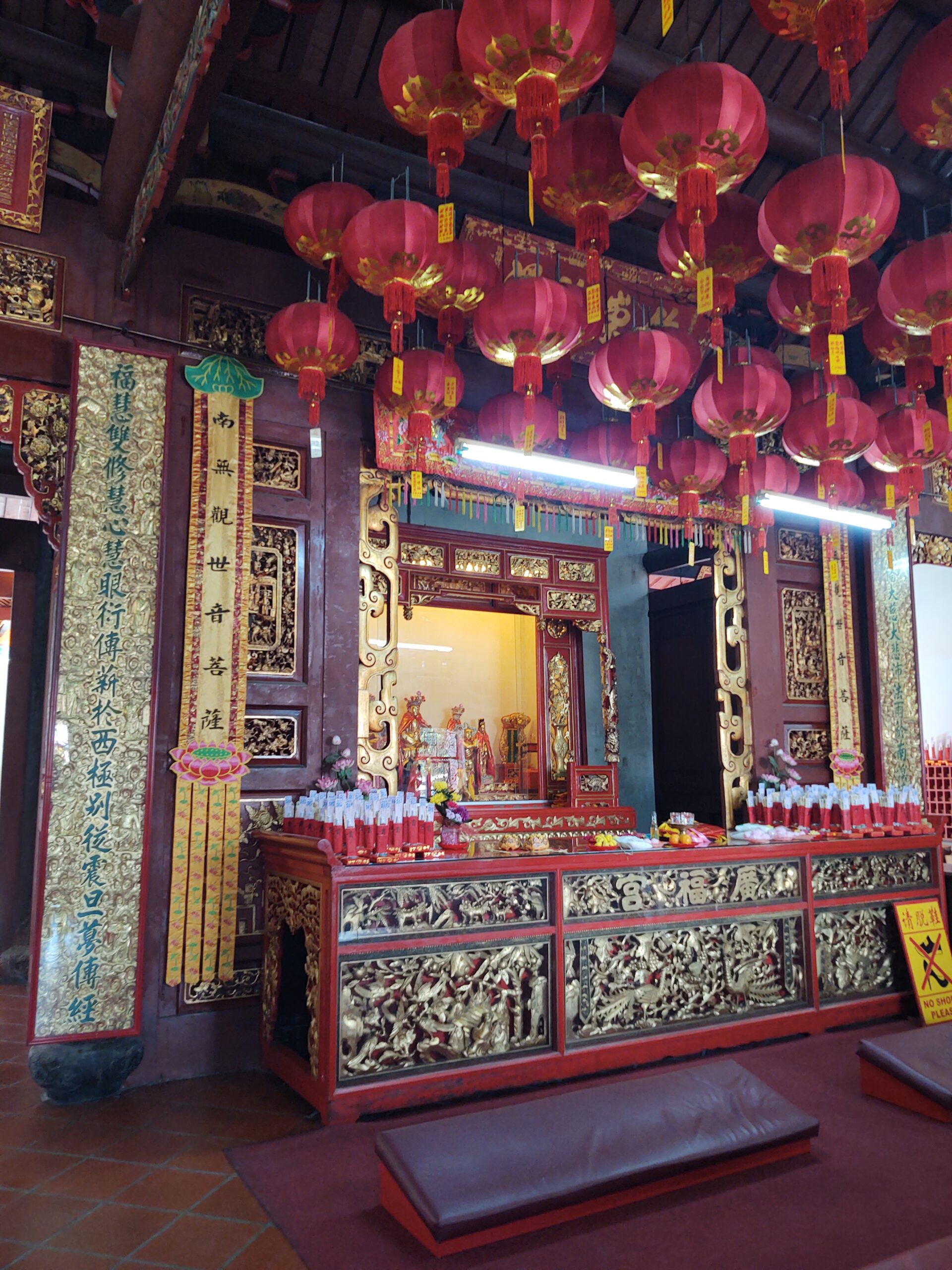
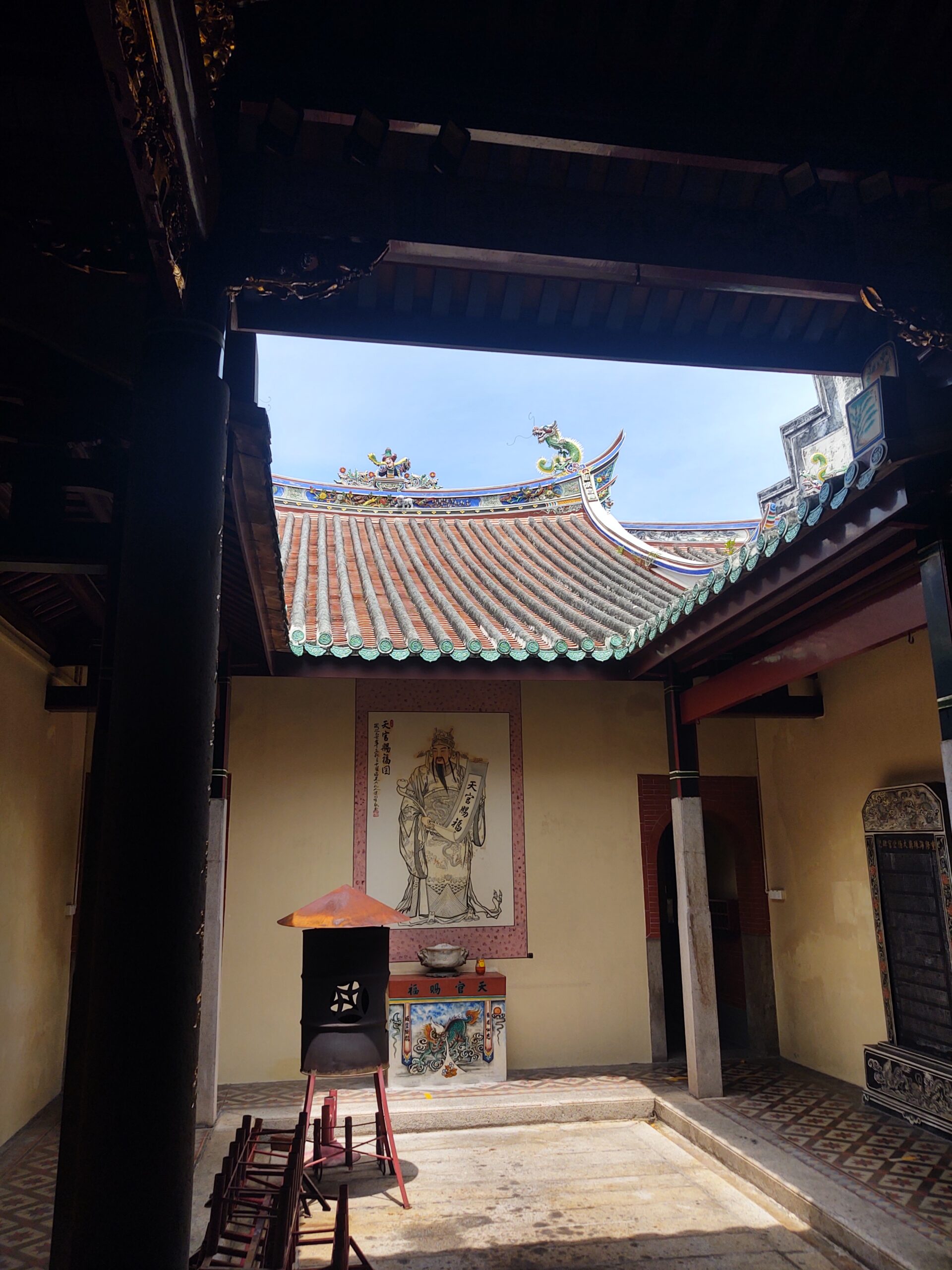
Penang Peranakan Mansion
Eventually, I step into the Peranakan Mansion, which is a real treat and my favorite place in Penang. The name “Peranakan” refers to an ethnic group that blended Malaysians of Chinese descent and British during the colonial years. This particular house was apparently once owned by a mob boss. More recently, it was bought and restored by a collector. And what a collection it holds! The house is gorgeously designed and furnished, with room after room of stunning furniture and décor in a colorful mix of Eastern and Western styles.
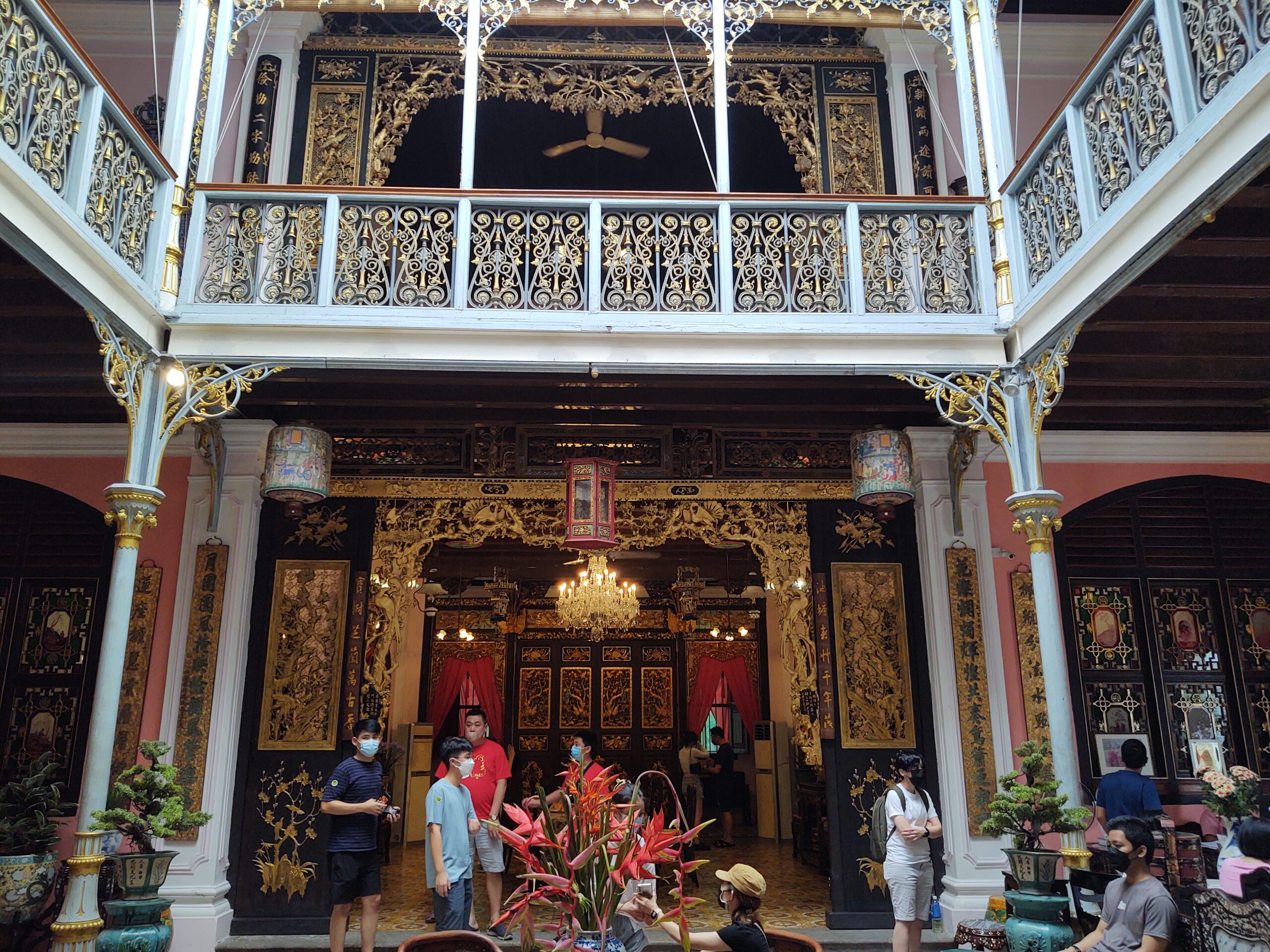
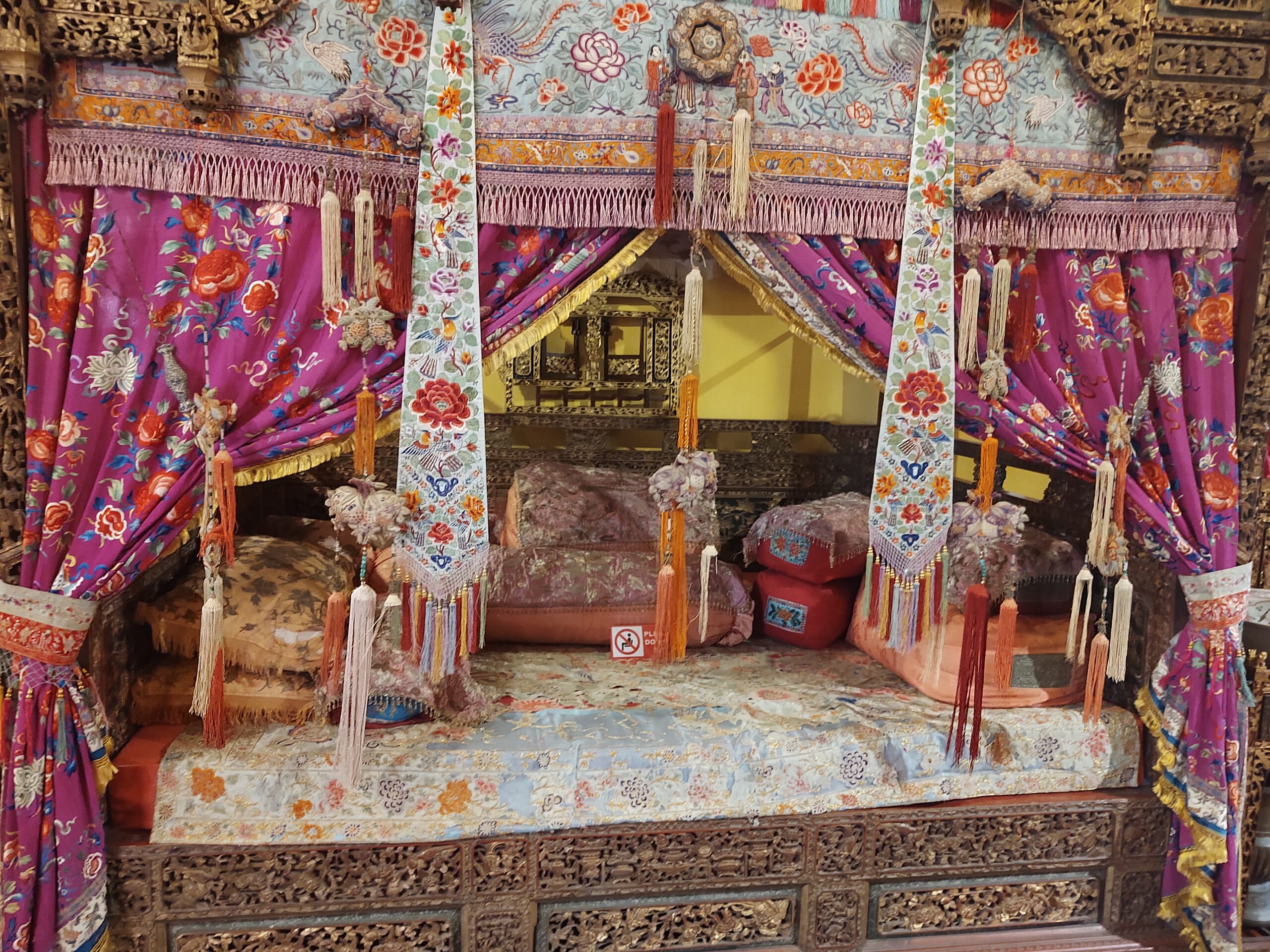
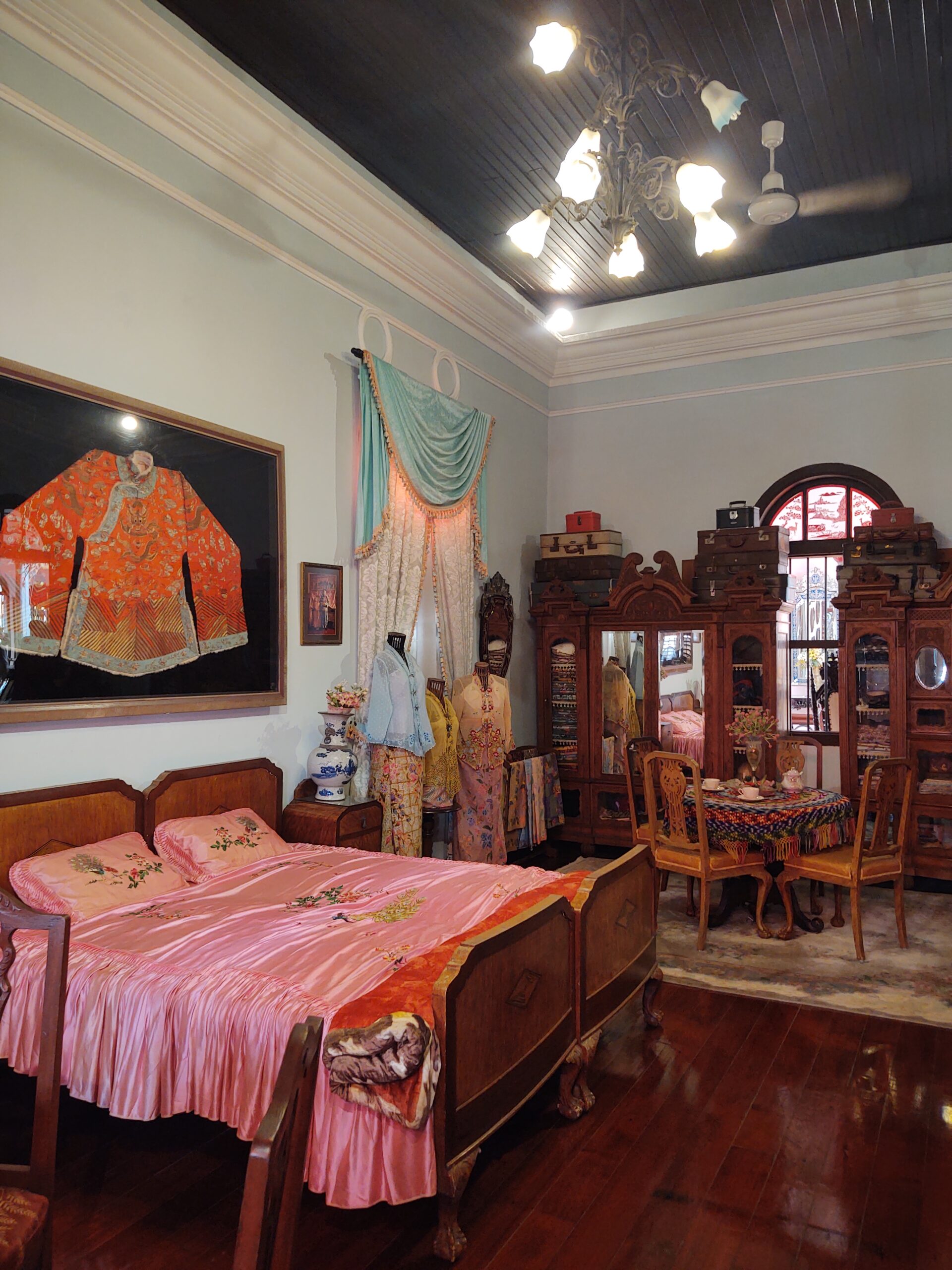
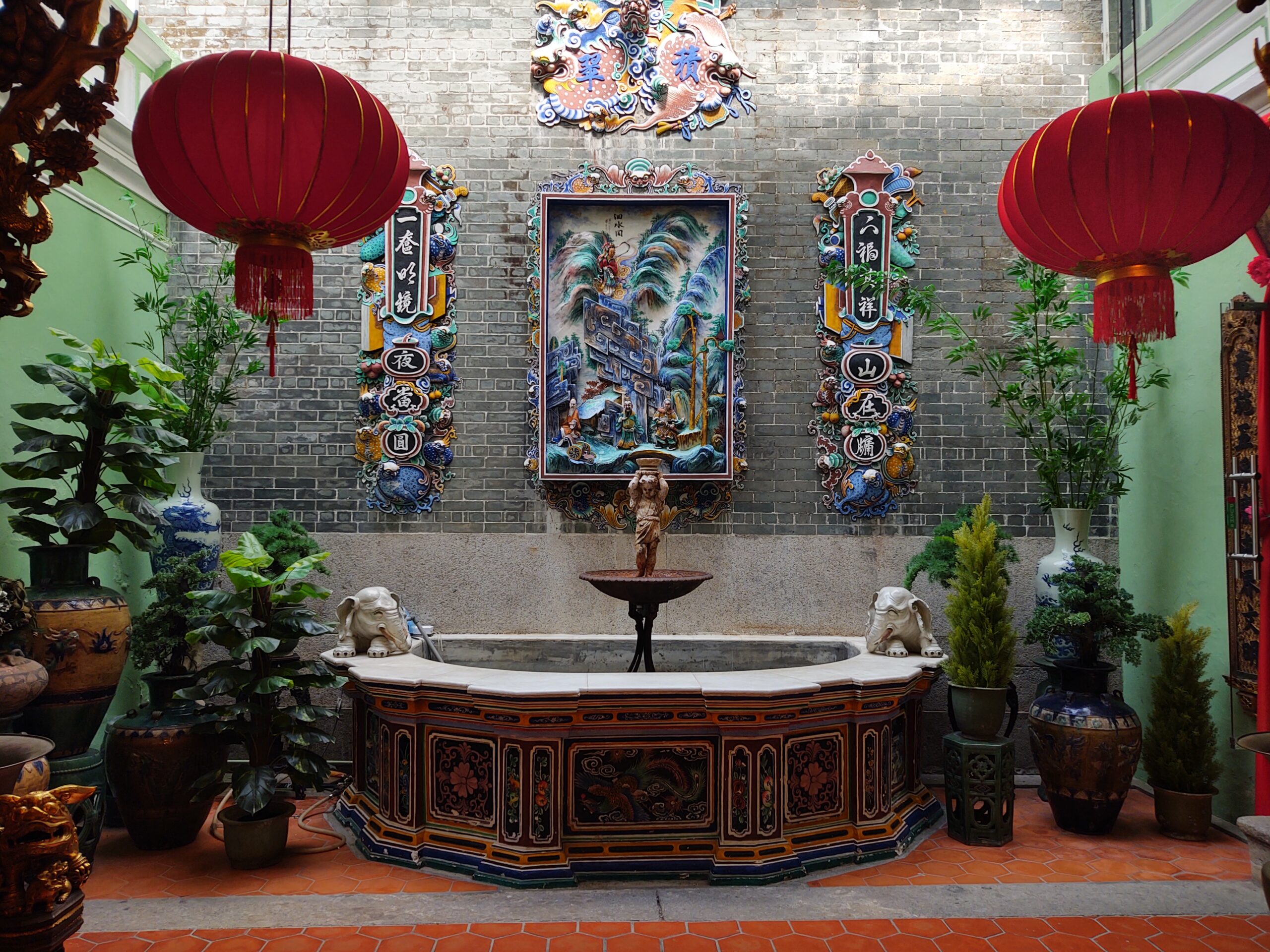
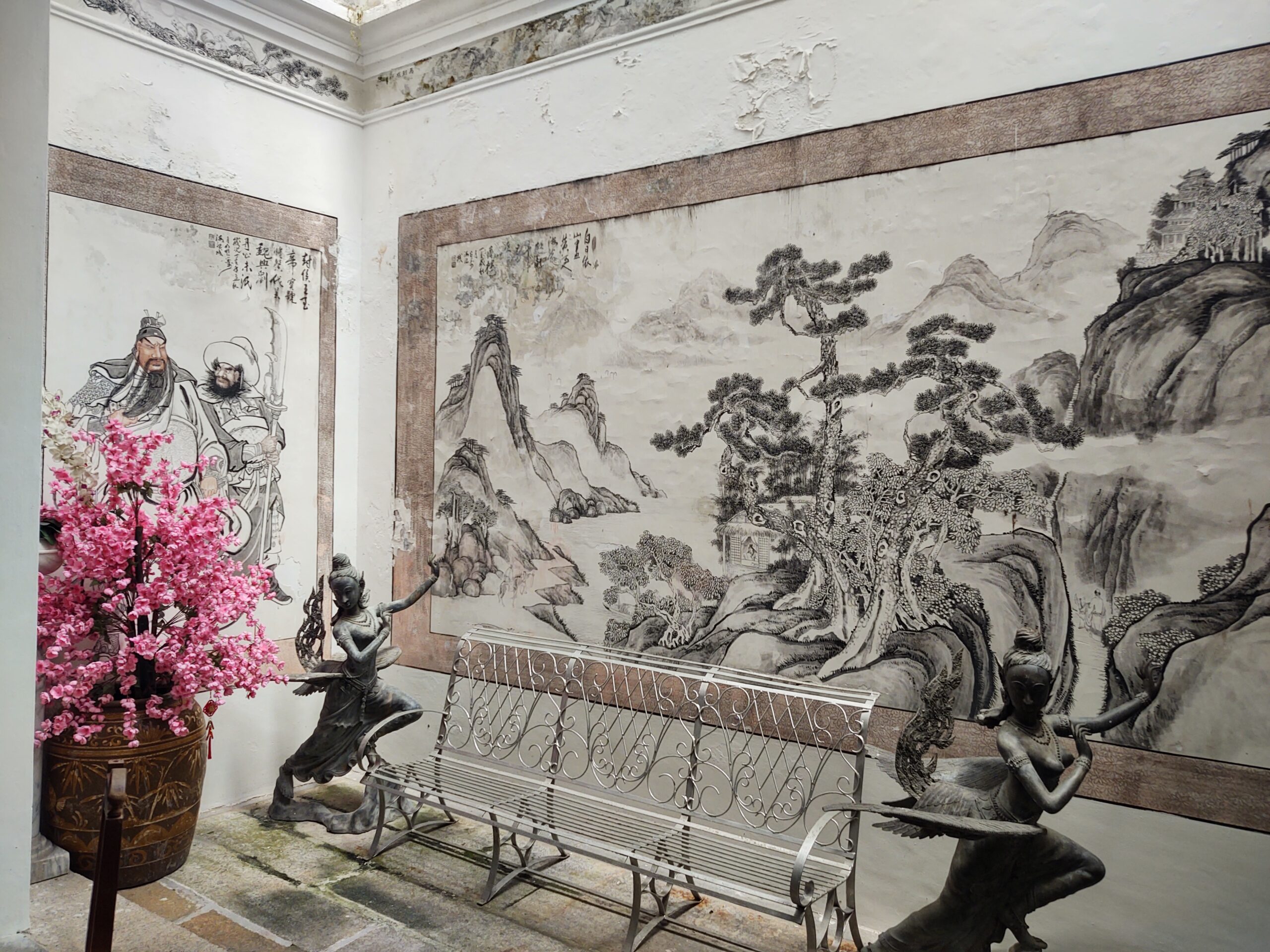
Nasi Kandar, A Local Specialty
As the day wears on, I make my way to the coast to walk along the water for a bit before heading back to the hotel and resting. Then I go out for dinner at the town’s best nasi kandar stand, unanimously recommended by reception, called Nasi Kandar Beratur Original.
Nasi kandar is a local Penangite specialty of rice customized with your choice of toppings. I wait half an hour in the queue beneath the lights of the mosque next-door, and by the time I finish eating, the line is three times as long. I walk a bit more, and even stop to check out some live music on the nightlife street, before turning in for the night. In one long day, I had covered almost everything to see in Penang.
A Different Culture — Muslim Malaysia
Everywhere I look, there’s teh tarik (sweet milk tea) and kopi (coffee) being sold that’s unlike anything you can find in Thailand. Some men wear spotless silk suits and hats, some women wear burkas despite the 90-degree weather and humidity, and all the food is halal. As I wander, I hear the singing calls of the muezzin — the five-times daily call to prayer — emerging from different loudspeaker systems at local mosques. Bars are nowhere to be found, except for that one street in that one extra-touristy part of town. It occurs to me that, for all my travels, Malaysia is the first Muslim country I’ve ever visited.
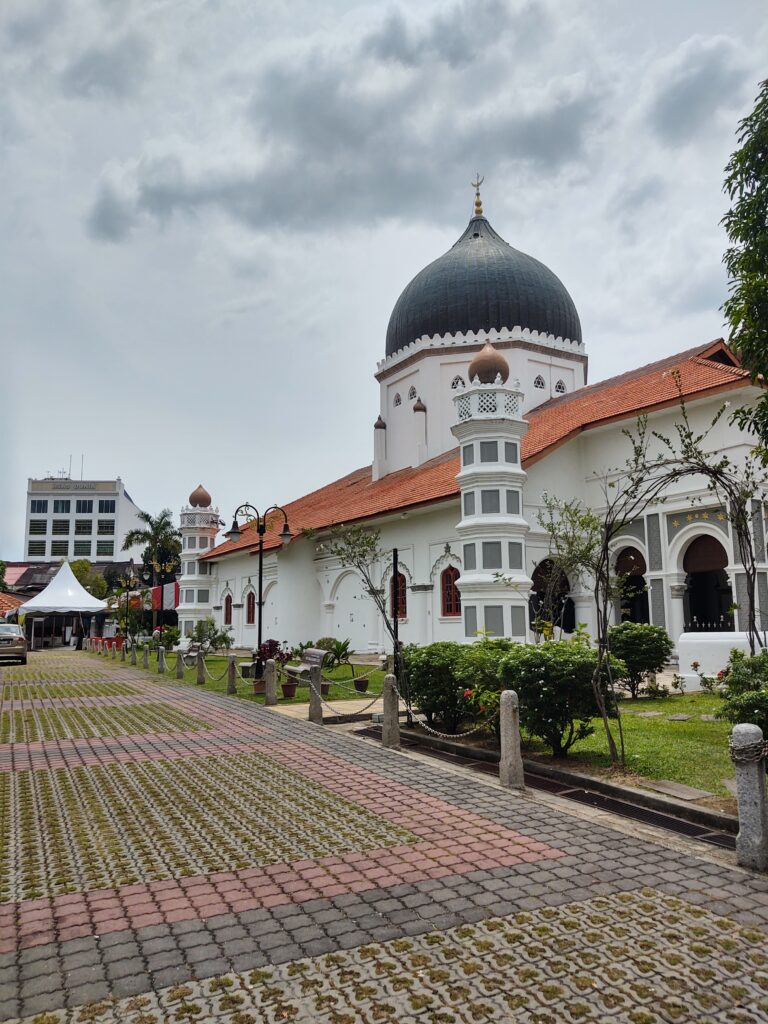
It feels a bit difficult to talk about Muslim culture as an American. I also lack the knowledge of Islam that would be required to talk intelligently about Muslim characteristics within Malay culture. All I can say is that the people in Malaysia were as friendly as any I’ve met — in fact, they were noticeably friendlier.
Penang seemed incredibly peaceful, and as I wandered around the city, I didn’t detect any hint of religious or cultural tension. Nobody looked at me differently, even though I’m recognizably a Westerner, and seemingly the only Westerner here, as I didn’t see a single other white person during my stay. There’s nothing awkward or unspoken. Instead, local people are just people, each living their own life, seemingly without concern for anyone else’s race or religion.
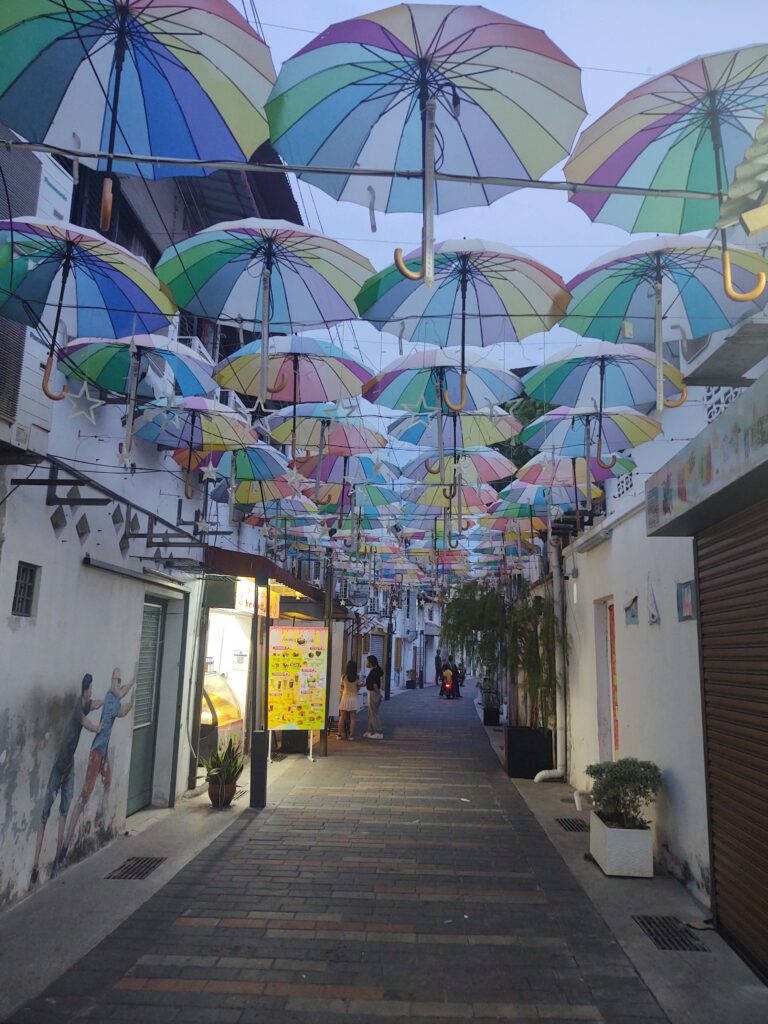
Malaysians seem incredibly cheerful and welcoming. Several times, while walking down the road, a car would drive by with a window rolled down and the driver would wave and shout “Hello, how are you?!” Regardless of religion, people here seem to see the bigger picture and to choose happiness consciously, living and embodying friendliness and joy every day.
Ringgit Relay
Even money is casual and flexible here. A few times, if something cost 1.30 ringgits and I had only two 1-ringgit bills, the vendor wouldn’t bother with the change (around 7 cents USD — not much, but still); they just gave it to me for 1 ringgit and laughed, telling me not to sweat it.
ATMs are surprisingly hard to find in Penang, and another time, I accidentally ran out of cash at dinner. I felt awful and embarrassed as I assured the guy I would go to the ATM and come back to pay an extra few ringgits for my meal, and he wasn’t the least bit agitated when I did so. Instead, we chatted for a while as he asked me if I liked the food, where I was from, how my trip was going, and where I’m going next, cheerfully smiling the whole time. This casual relationship with money is completely unheard of in the U.S.
I was also amazed by a different kind of nightlife here. Just because there aren’t bars and alcohol doesn’t mean people don’t stay out late. The downtown heart of Little India is still loud, crowded, and active late at night — past ten, eleven, or even midnight. You can always pop in and sit down for a kopi, teh, or quick bite. Since I don’t drink, I find this so delightful.
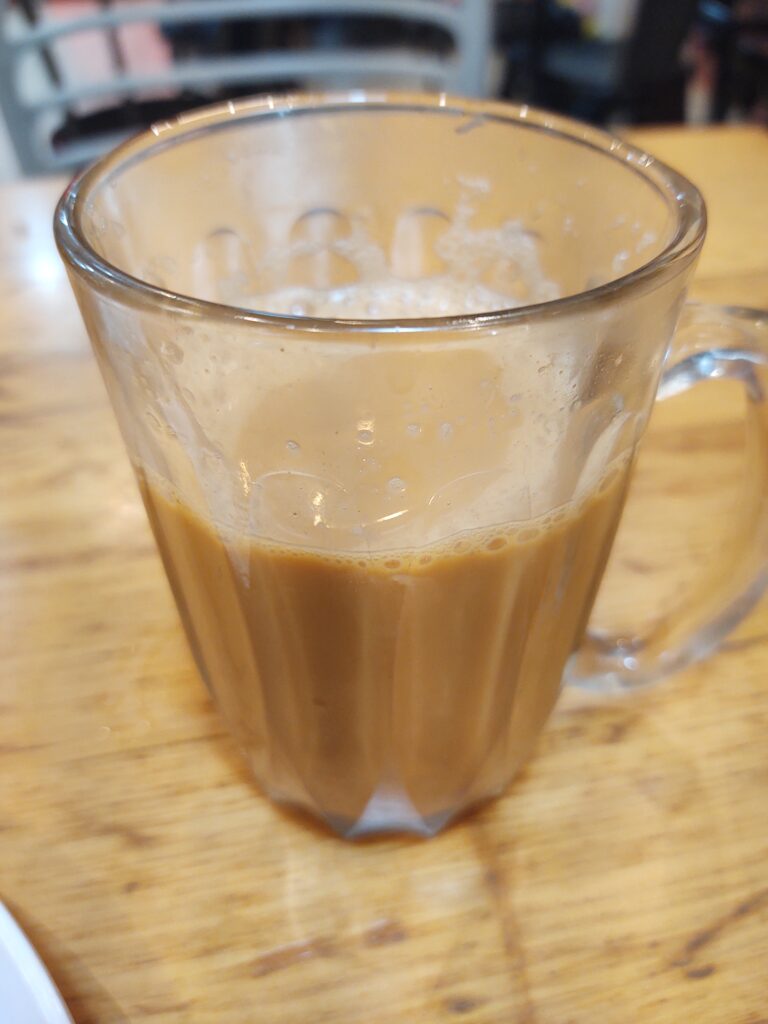
My Second Day In Penang
My second day in Penang ended up being rather uneventful. Part of my take-my-time, slowed-down approach to this trip, both in Malaysia and elsewhere, was to give myself the opportunity to stay on top of work while I went away for three weeks.
I fell a little behind in Singapore, hanging out with friends a little longer than I reasonably should have, so I forced myself to catch up on my second day in Penang. I’d seen all of downtown already, so this wasn’t a huge loss.
However, I didn’t make it to the famous Kek Lok Si Temple up in the hills, nor did I take the funicular up to the top of the mountain for another view. If you visit Penang, make sure to check these places out too — they’re some of the island’s most famous attractions.
Instead, I checked into a coworking space, grinded all day, and caught up.
Onward To Kuala Lumpur
Eventually I took a Grab to the airport for my late flight. Another friendly driver asked me about my trip, and I replied that I was going to Kuala Lumpur (KL) next. He laughed and smiled as if to say “Isn’t life so funny like that?!” It didn’t seem all that unusual to me, but I can’t overstate how much I love the lightheartedness of the people I met in Penang.
I’d been told that Penang and KL are incredibly different cities, with incredibly different vibes. I was curious to experience the other side of modern Malaysia.
I’ll tell you more about KL in my next post. For now, enjoy this charming Penang photo gallery.
See you soon,
Andrew
P.S. Have you been to Penang? What did you think? Leave a comment below — I’d love to hear from you!
